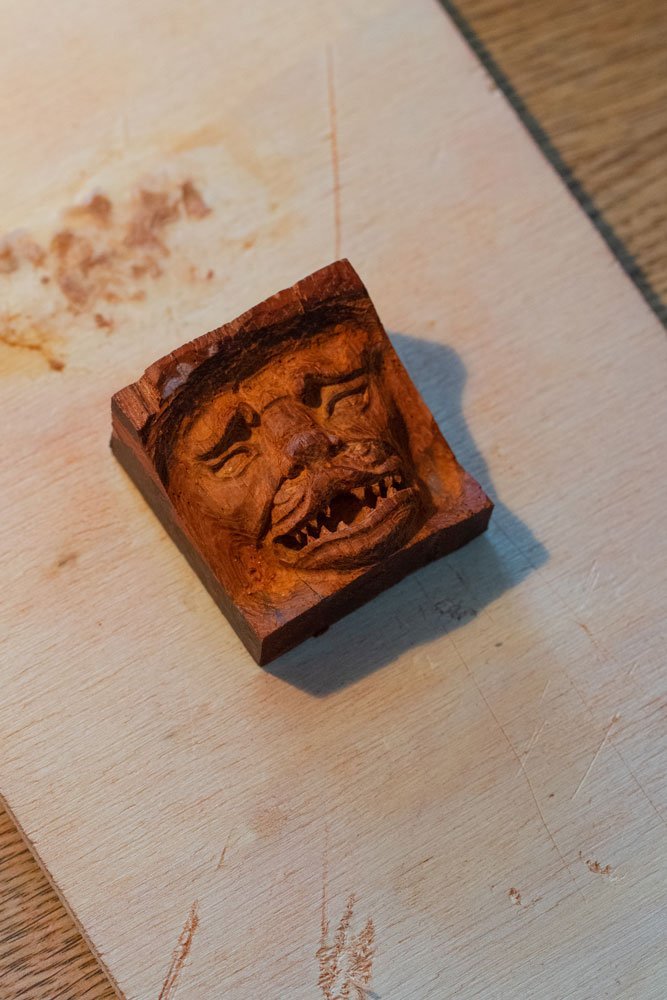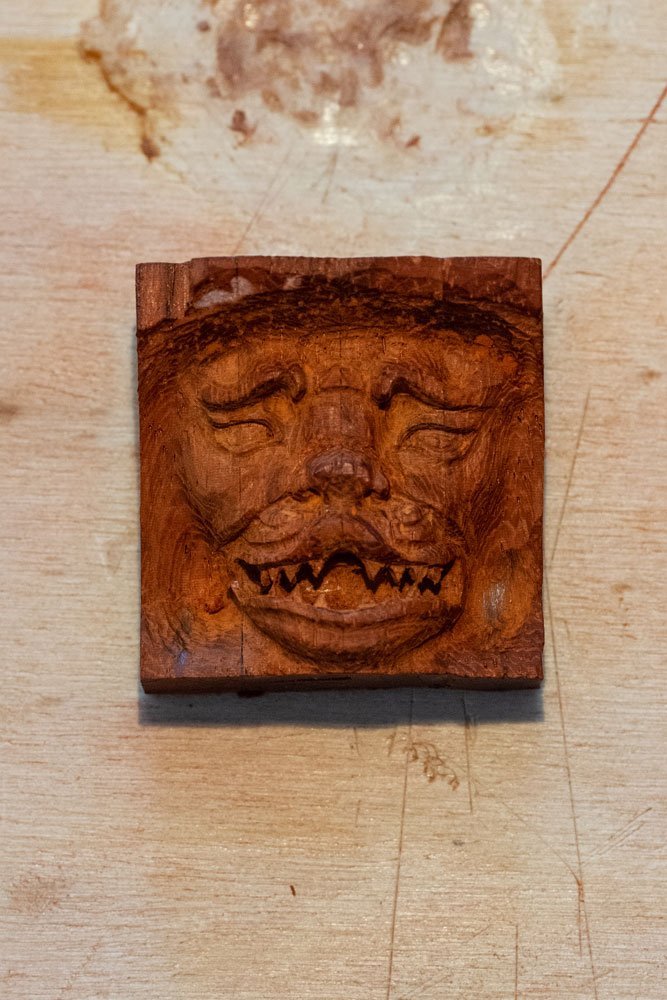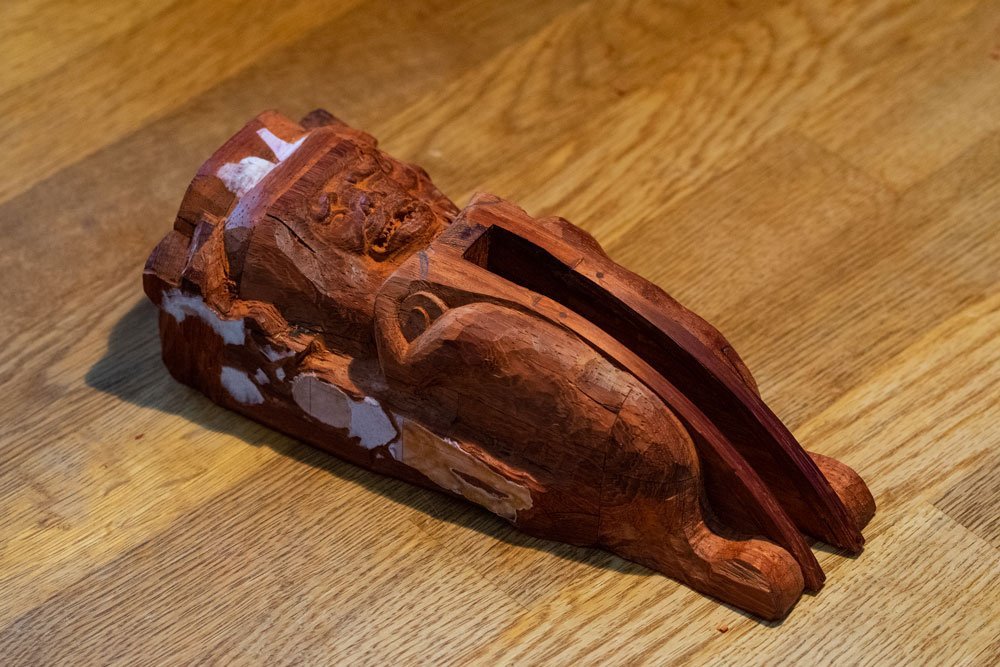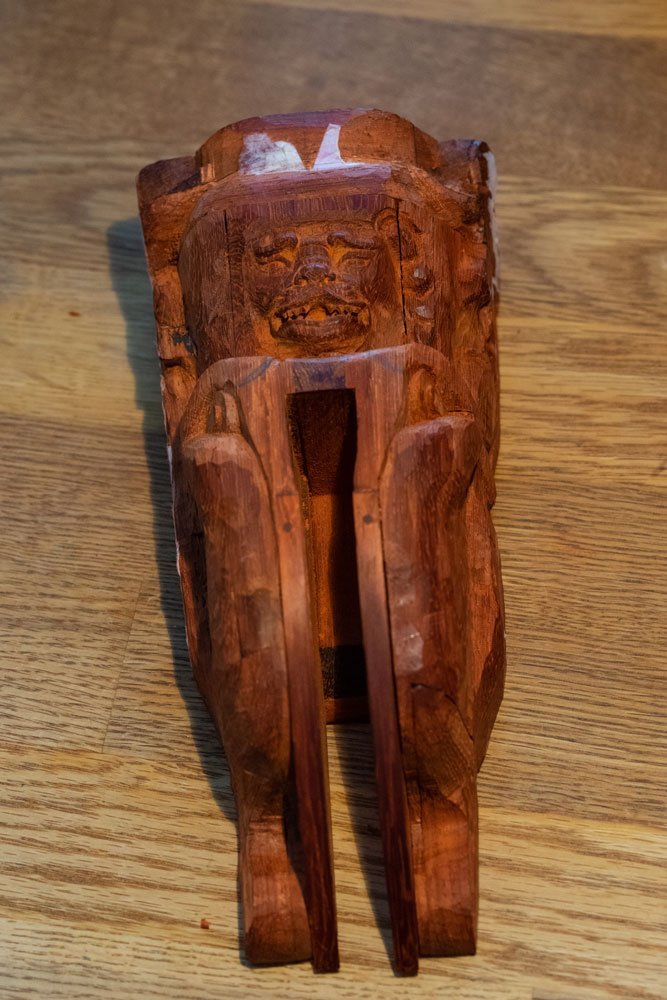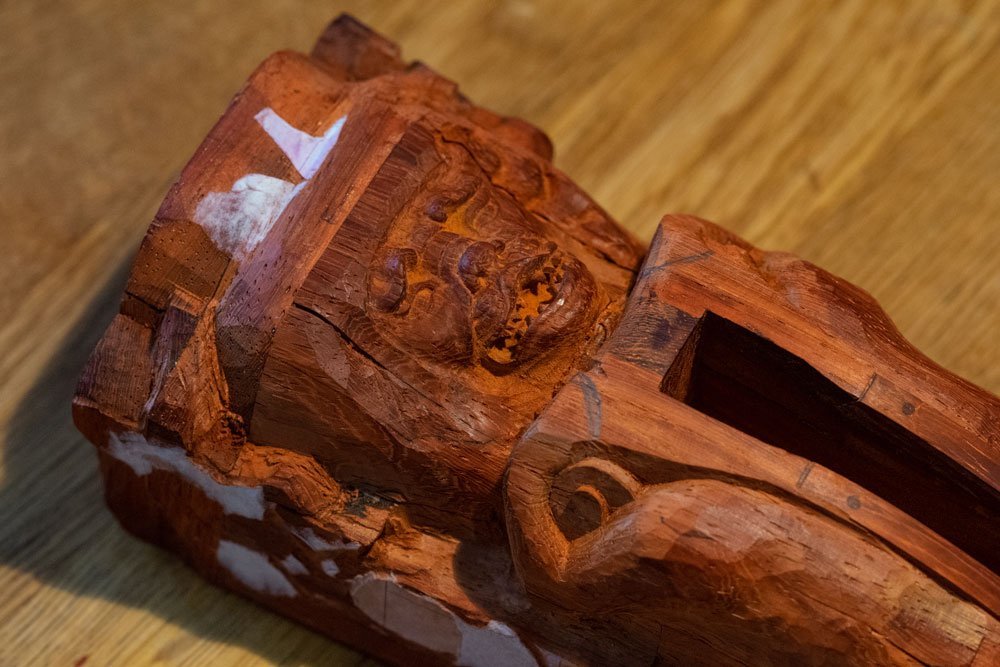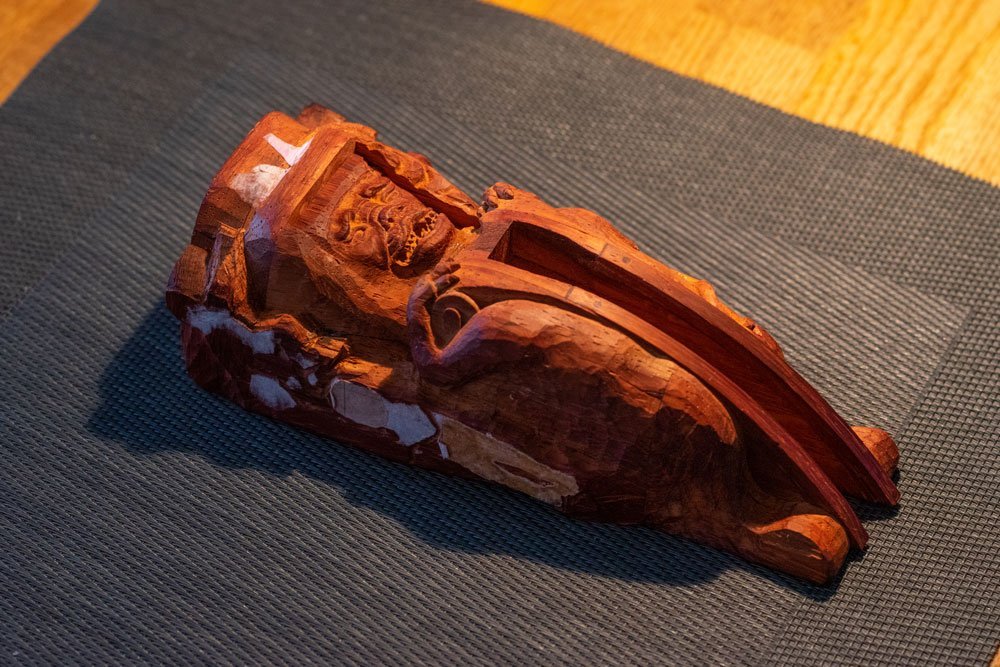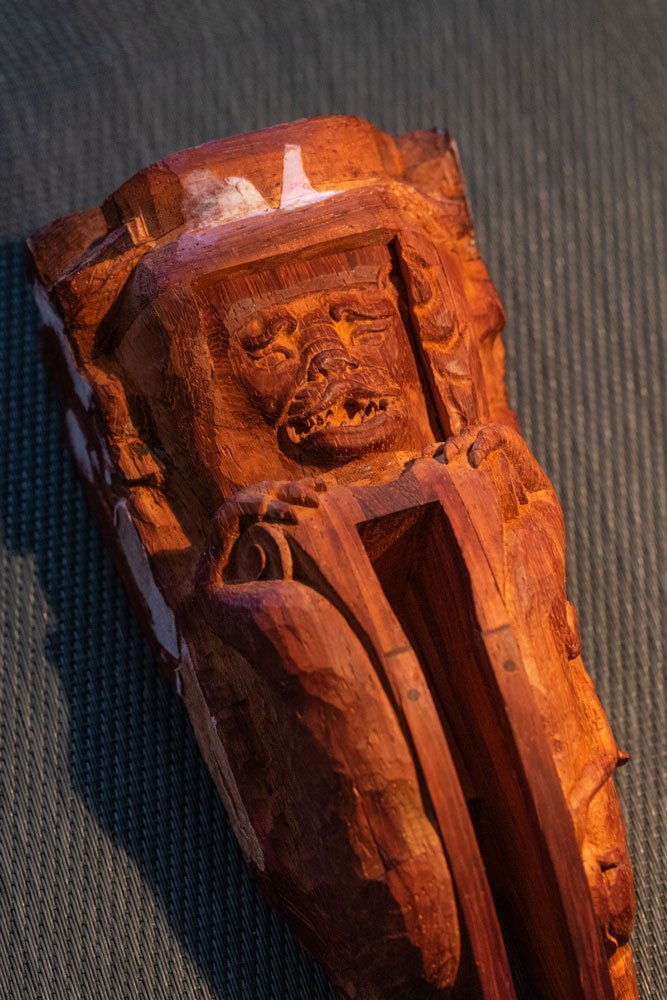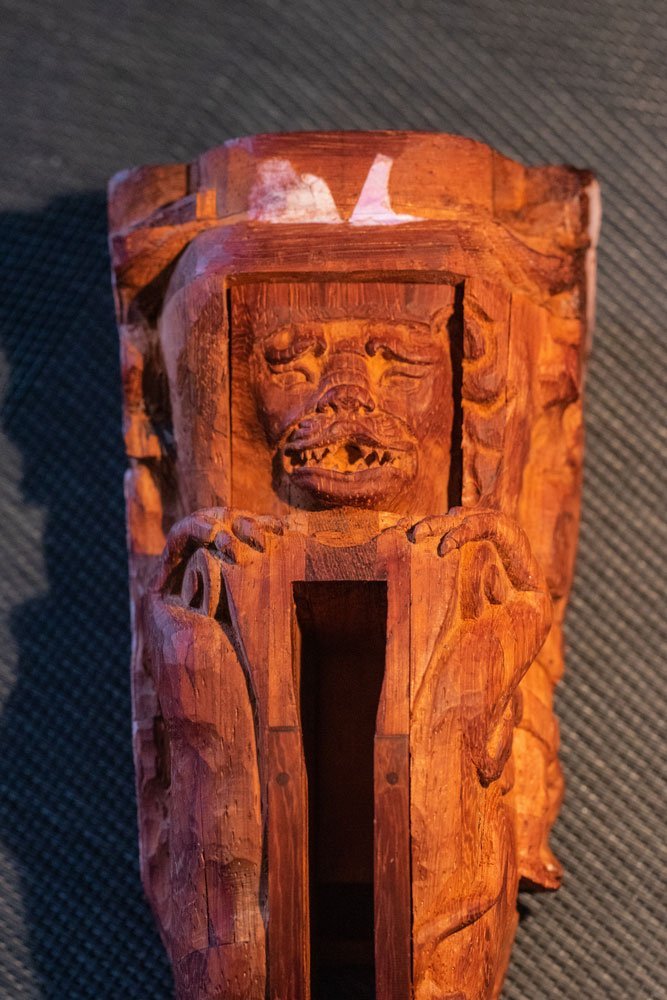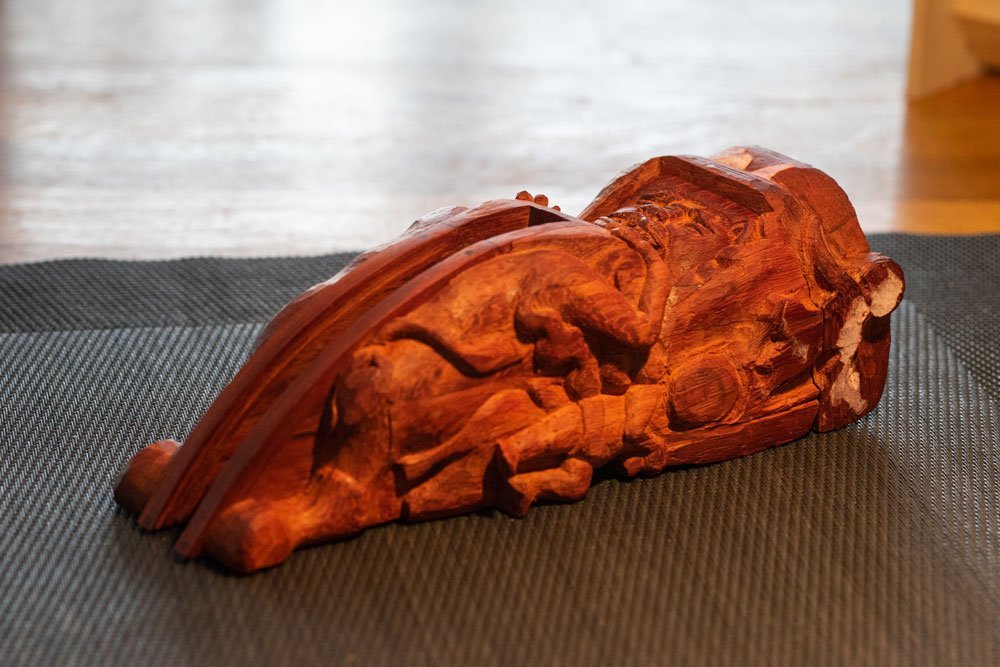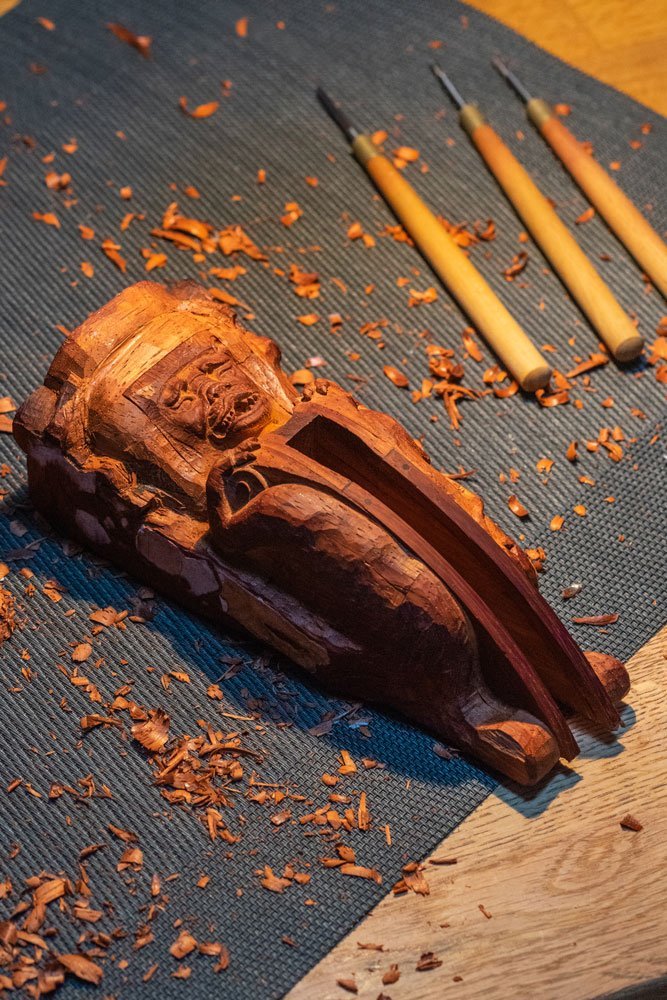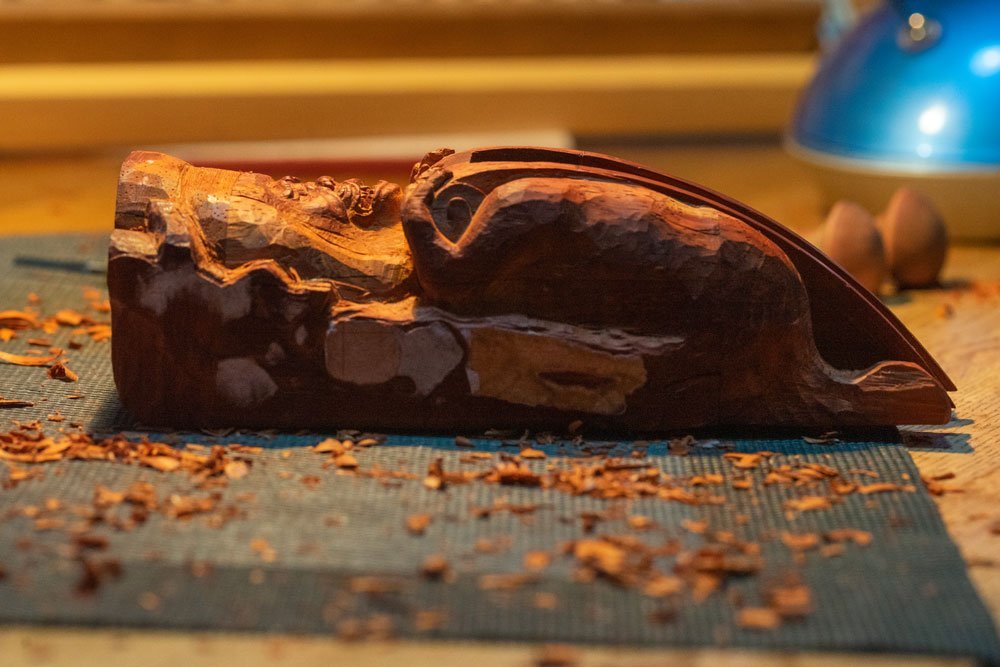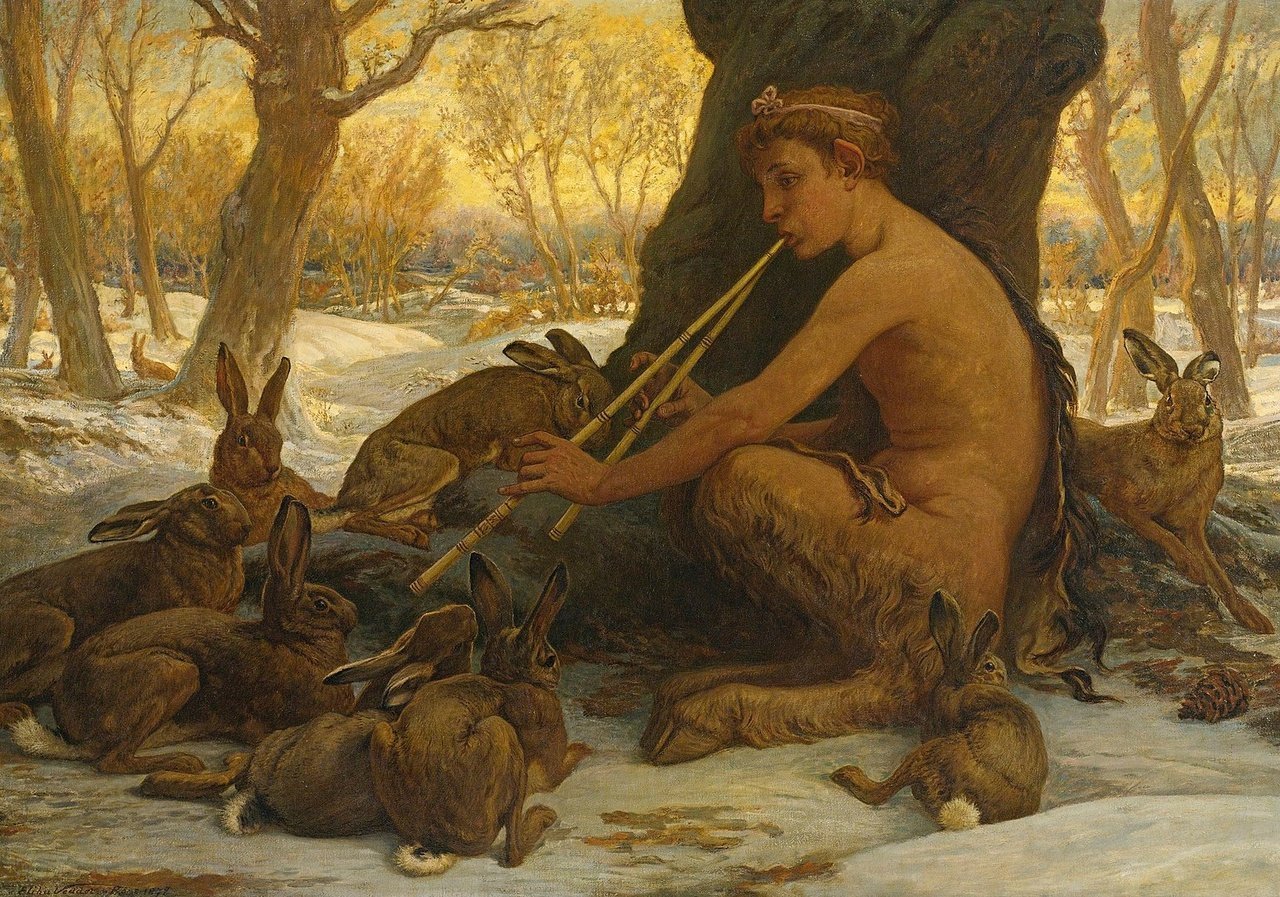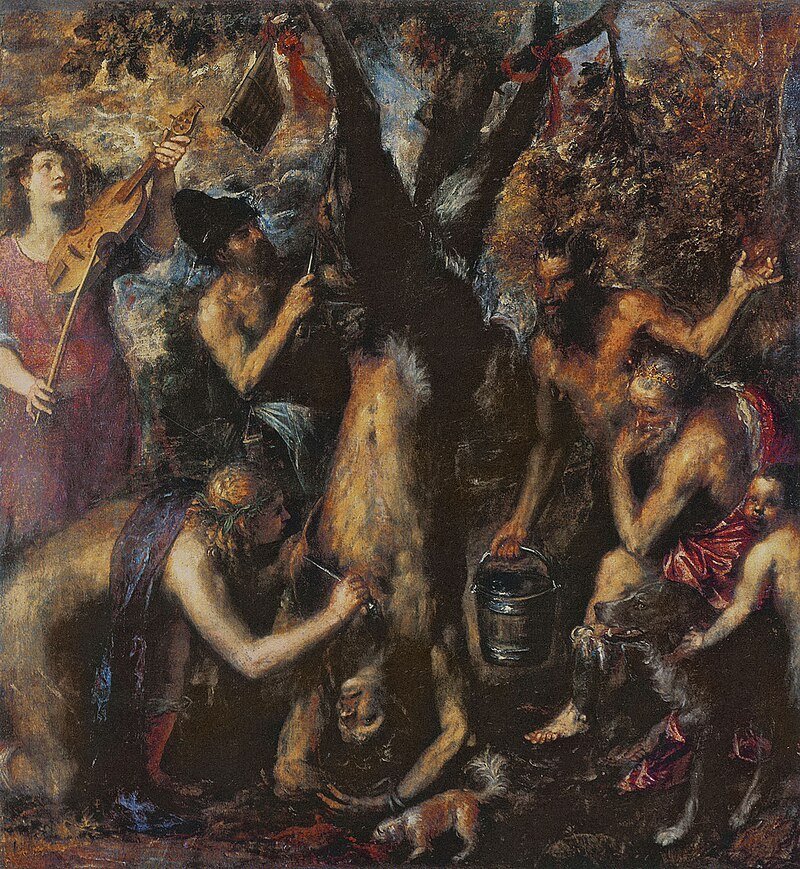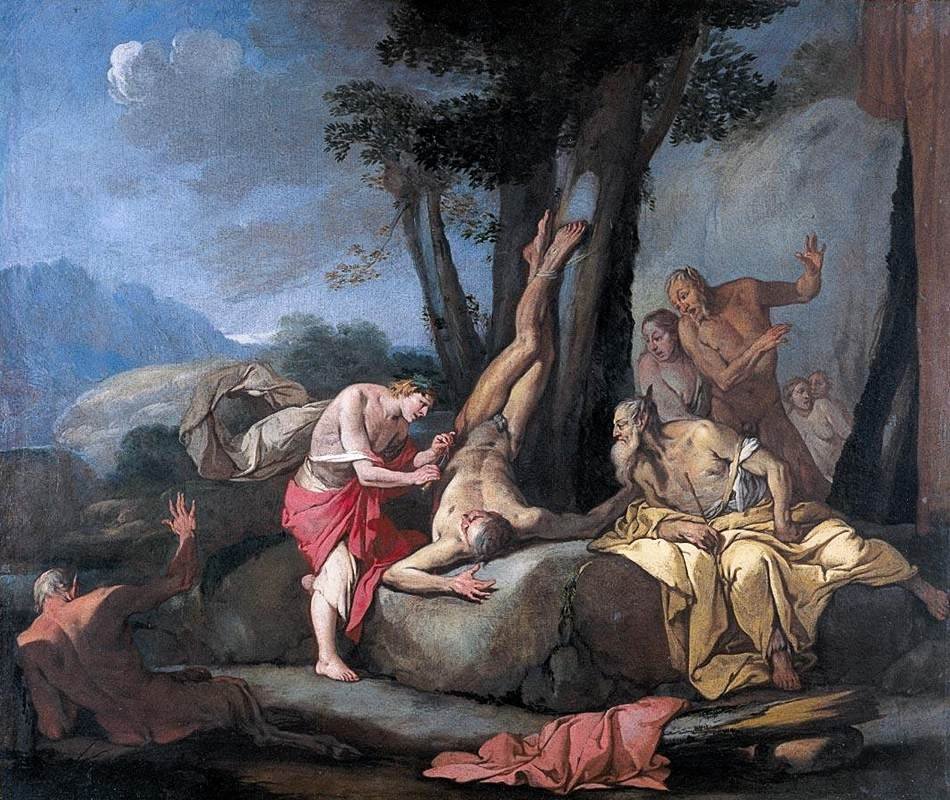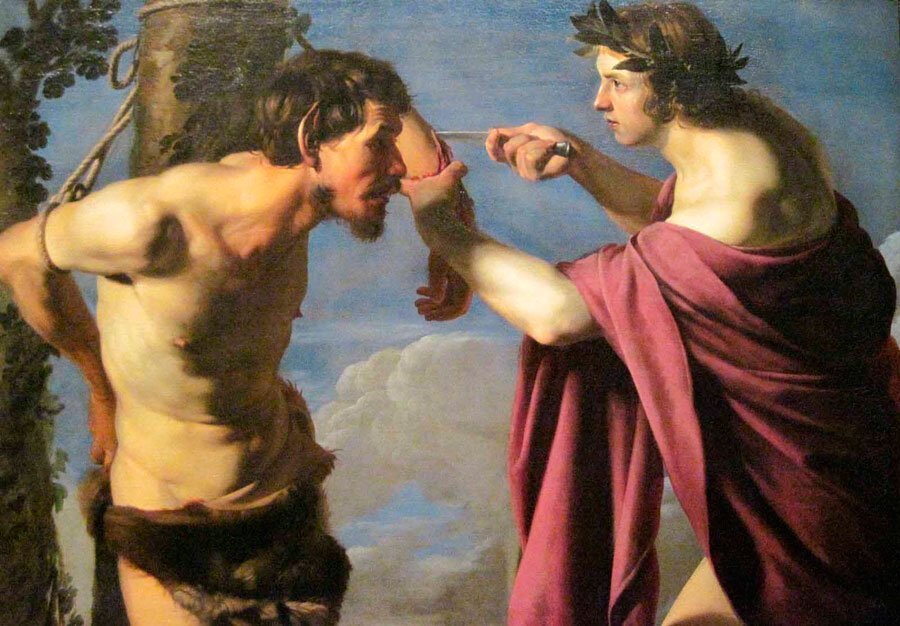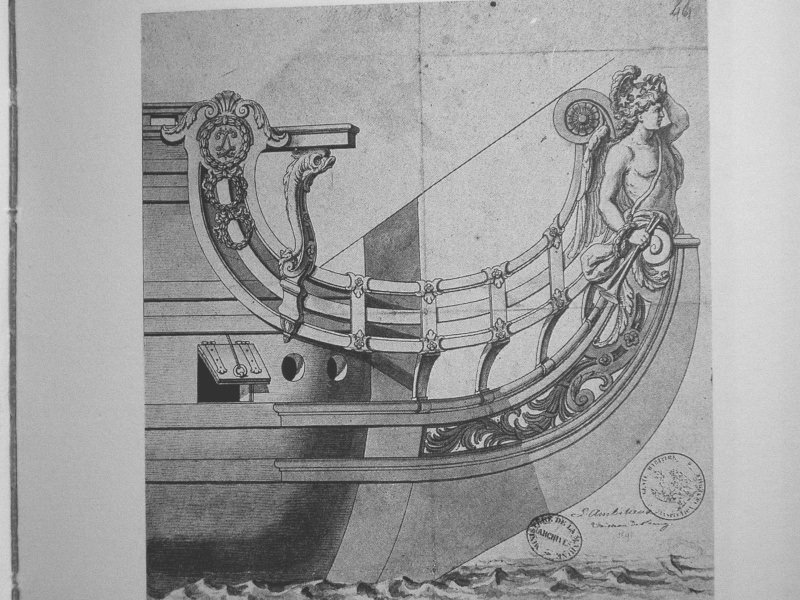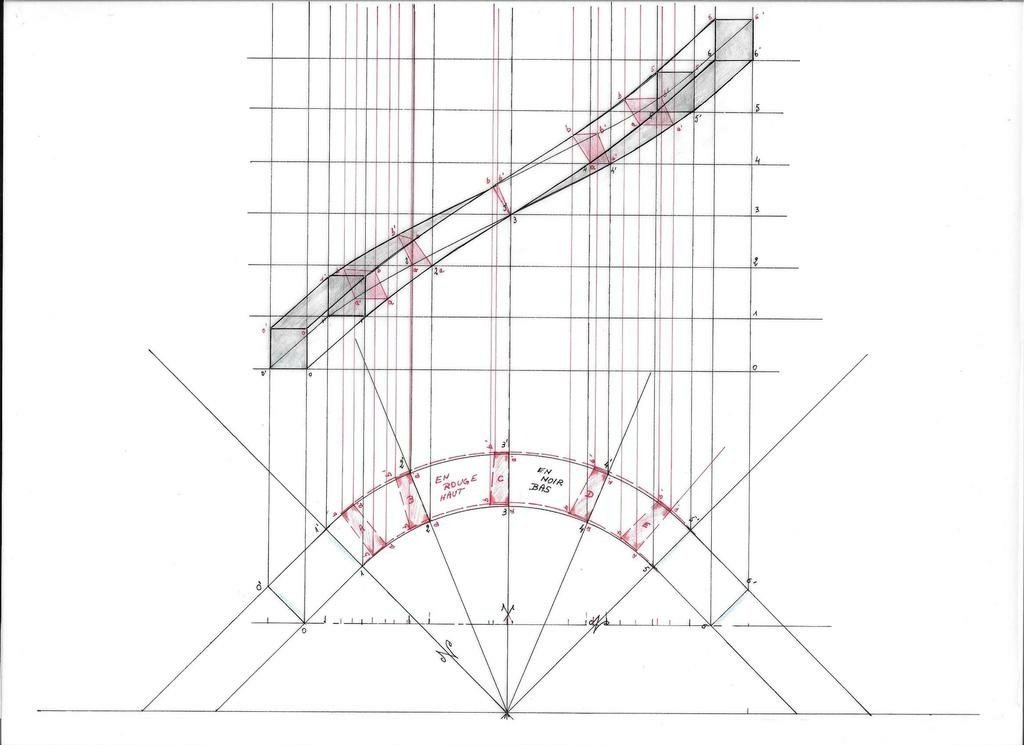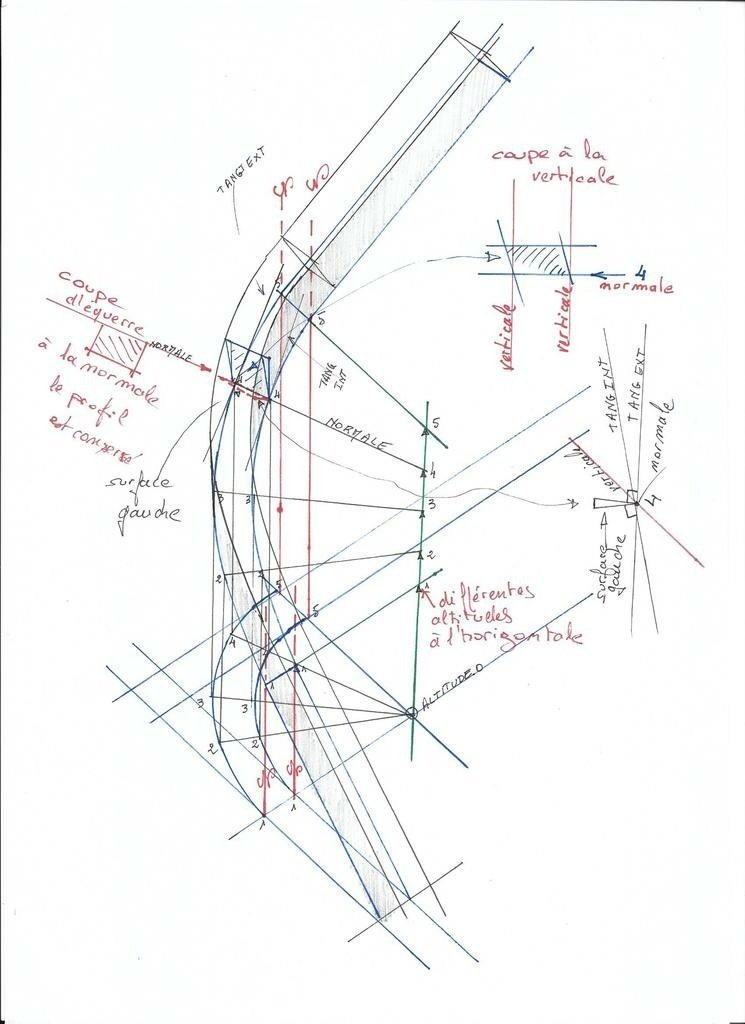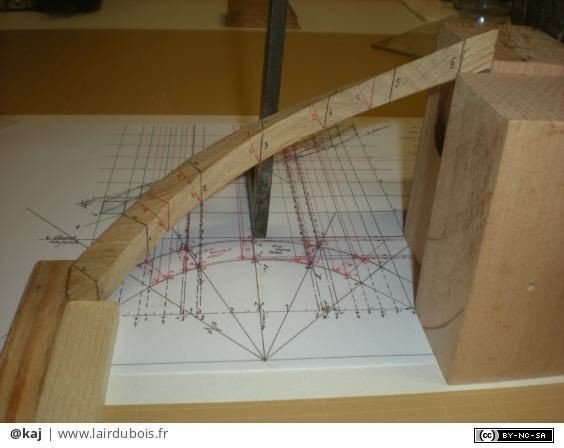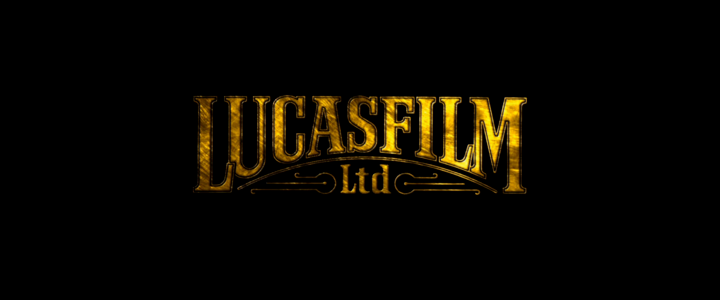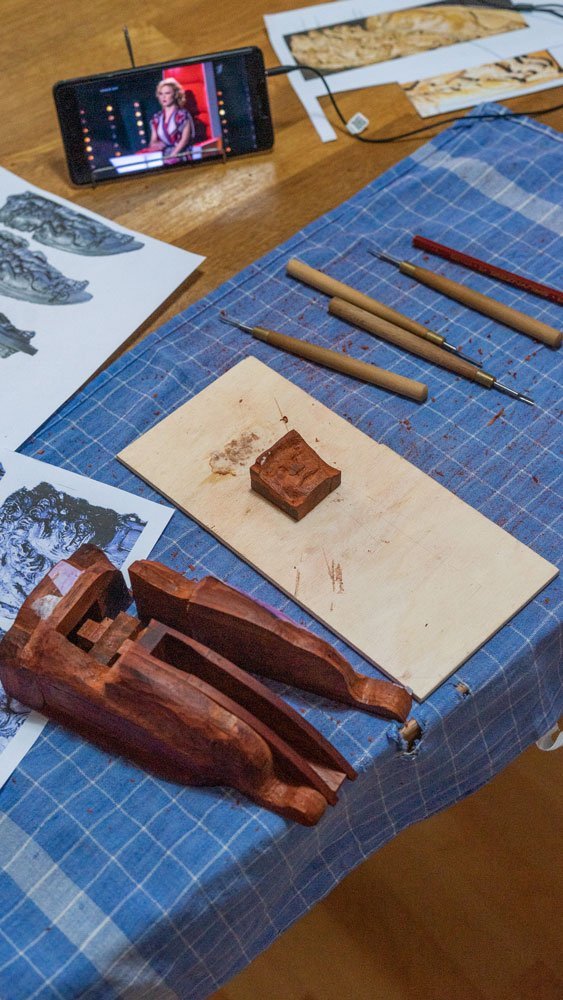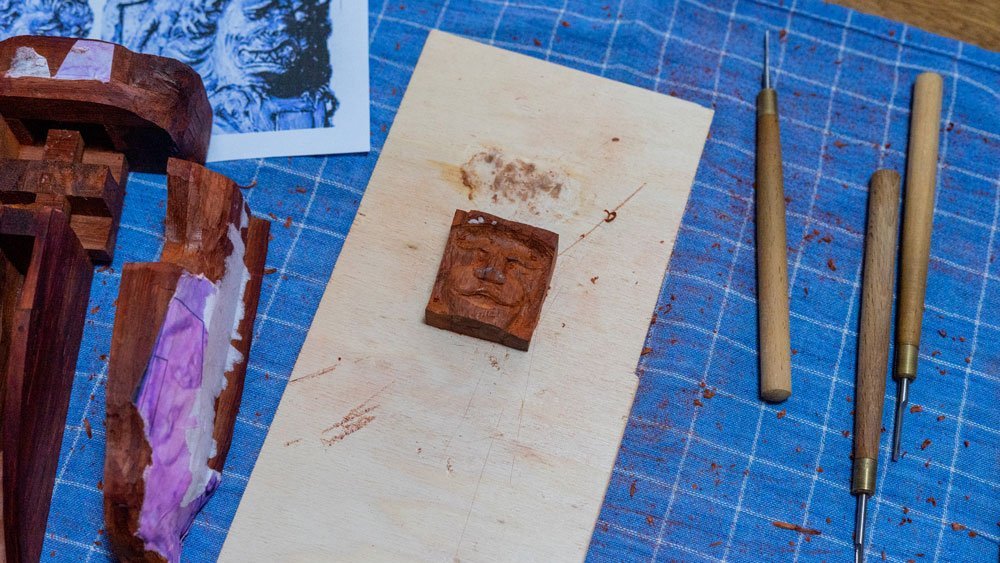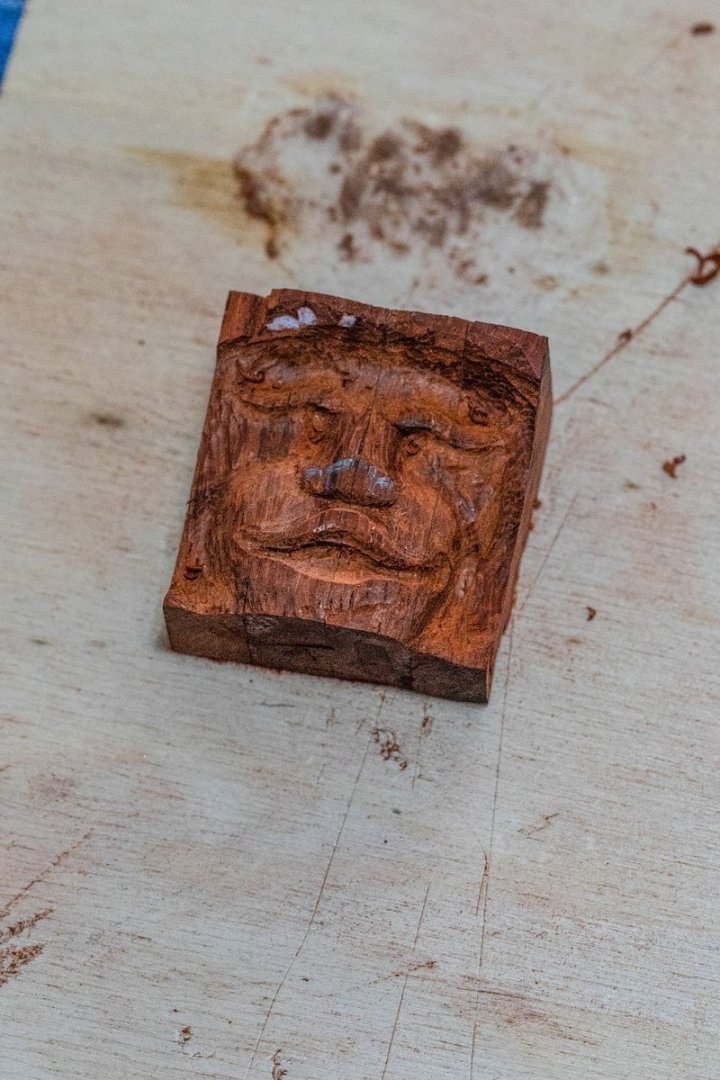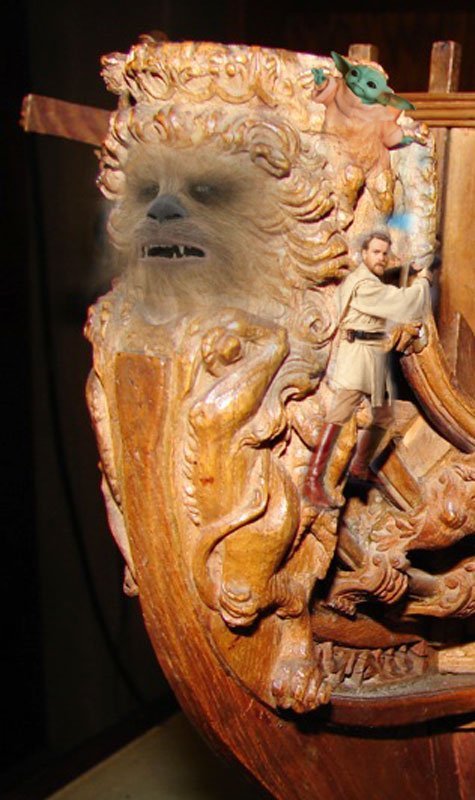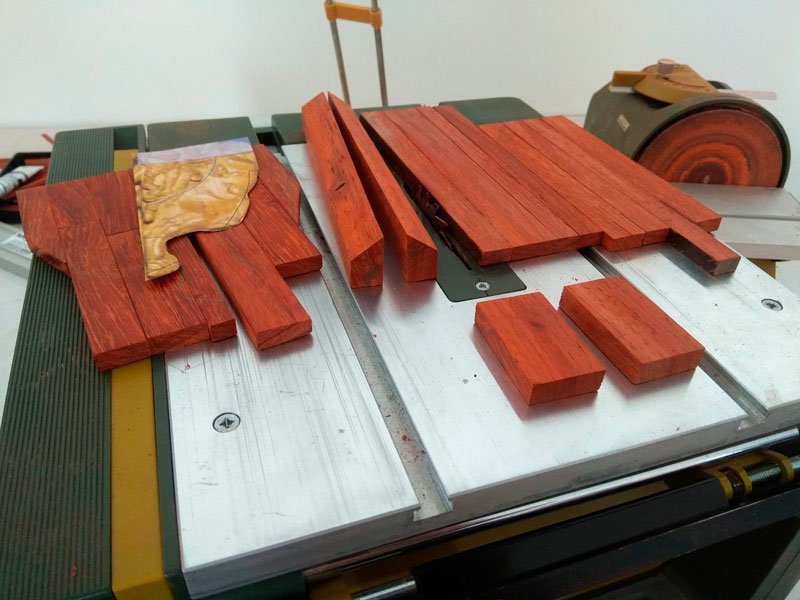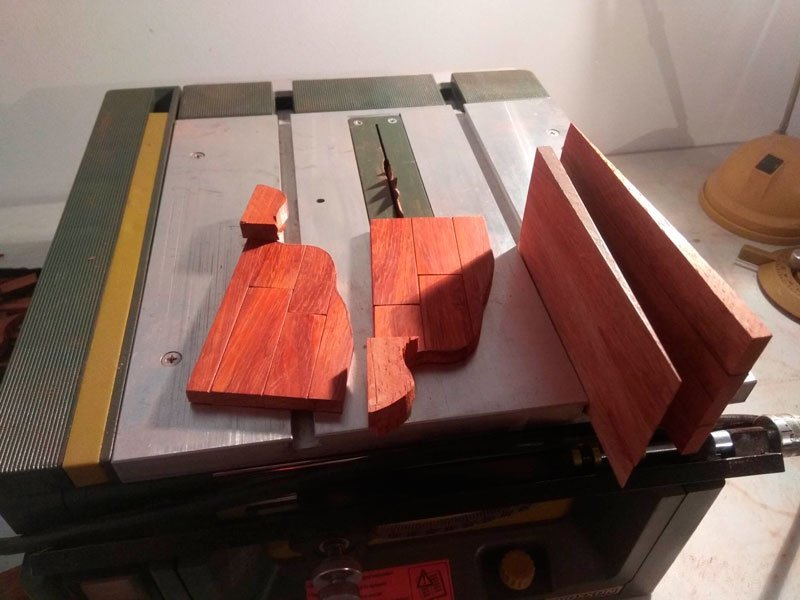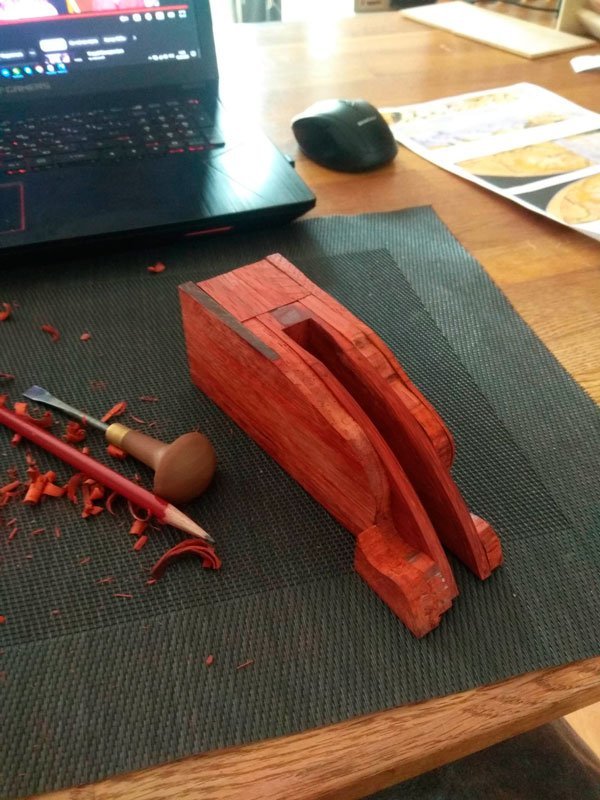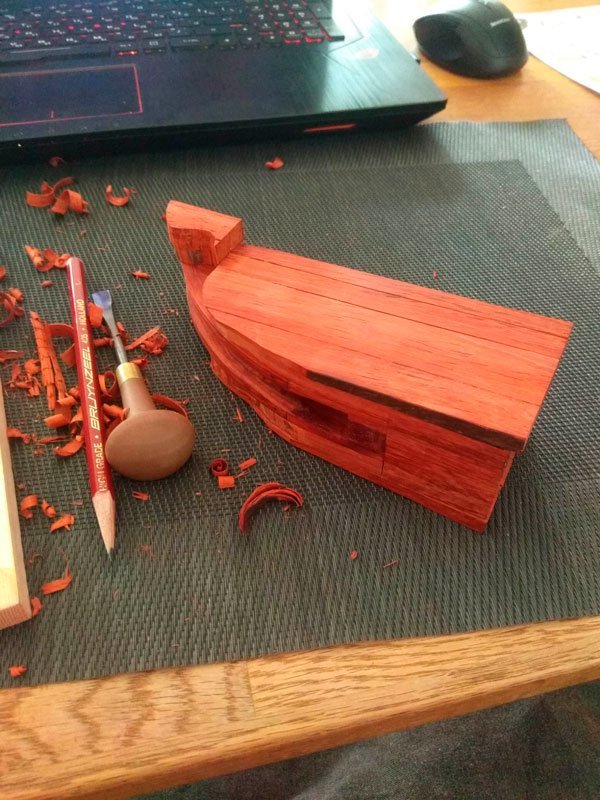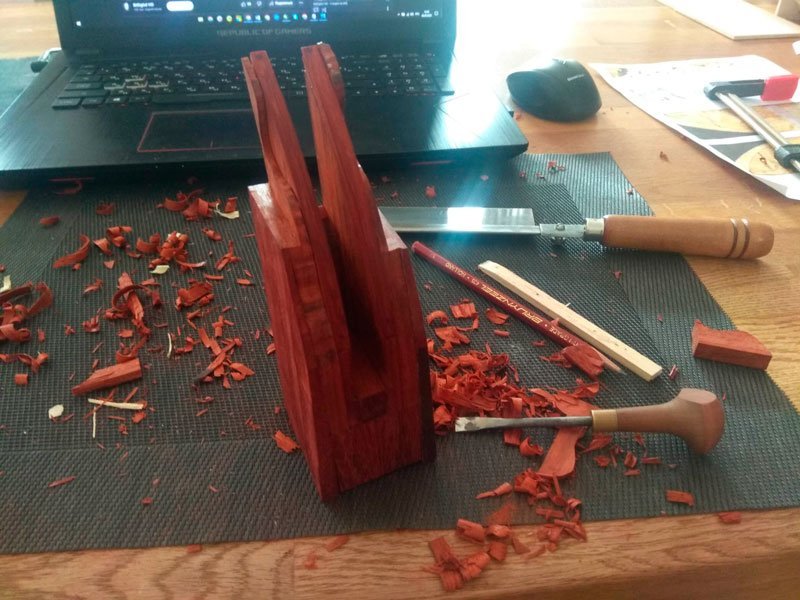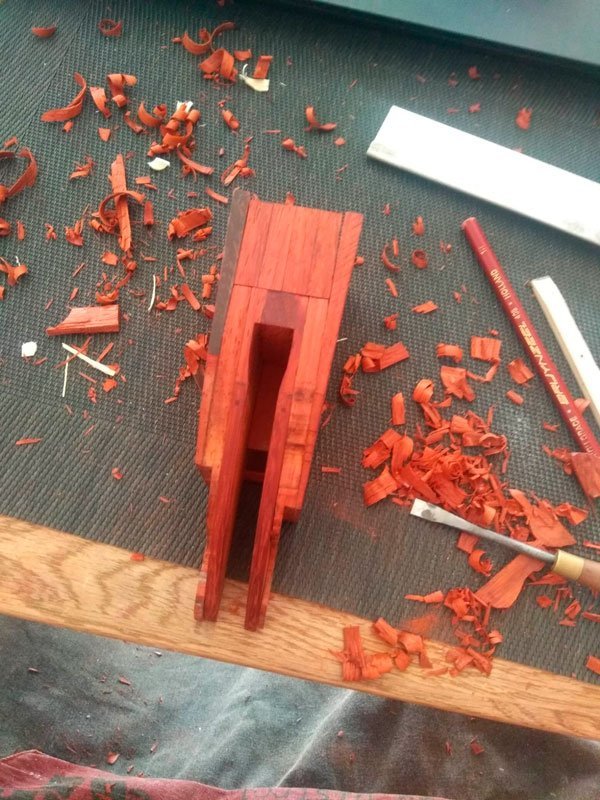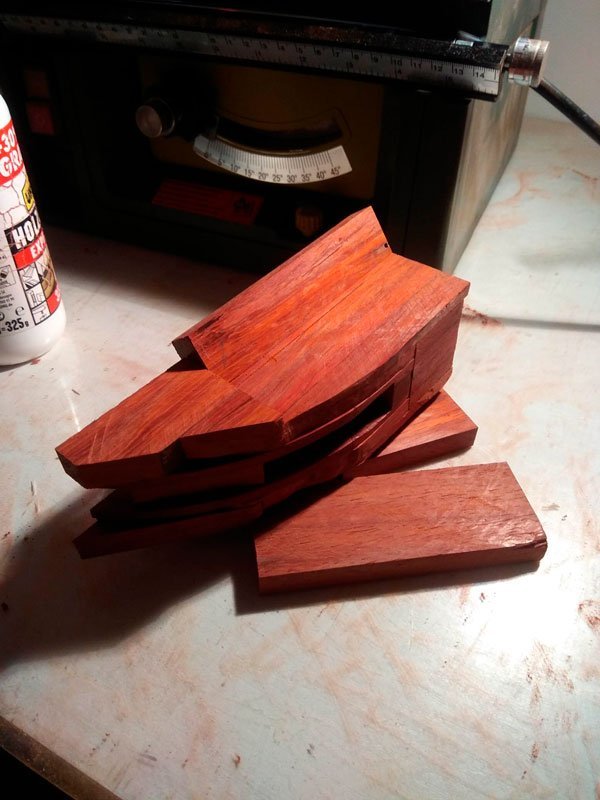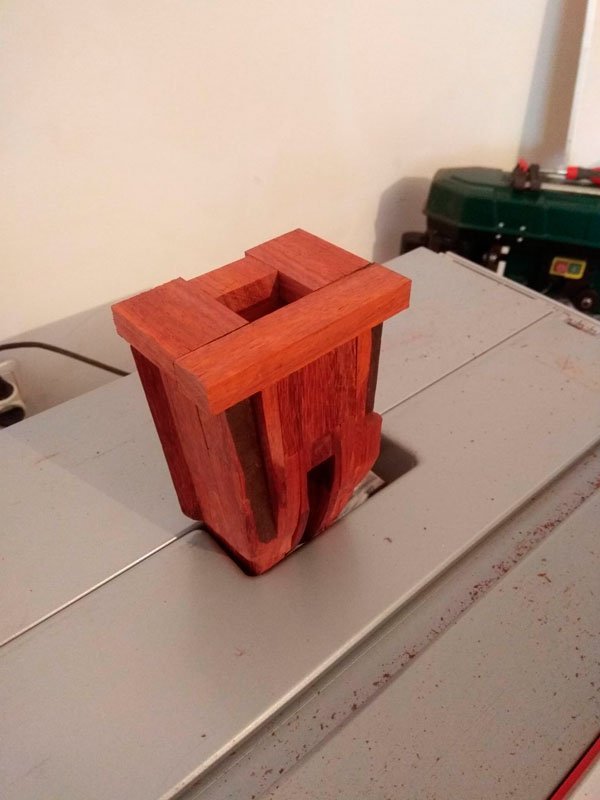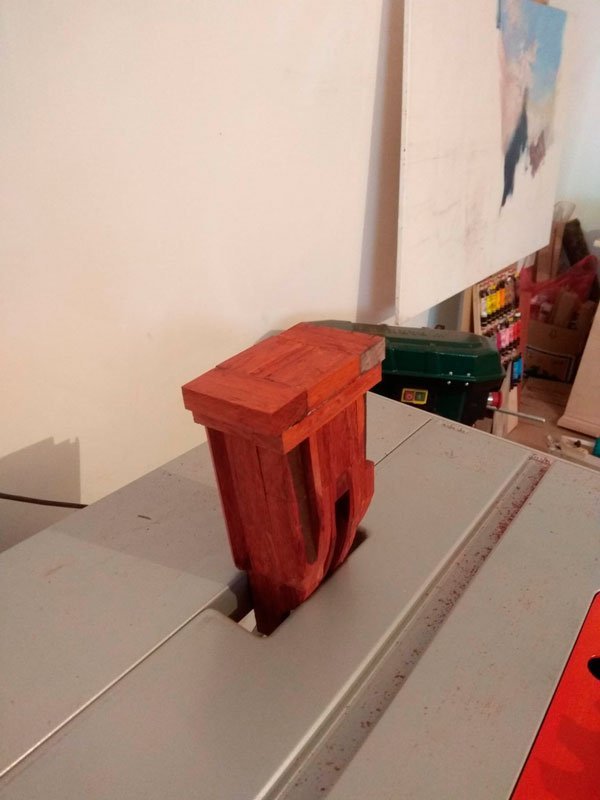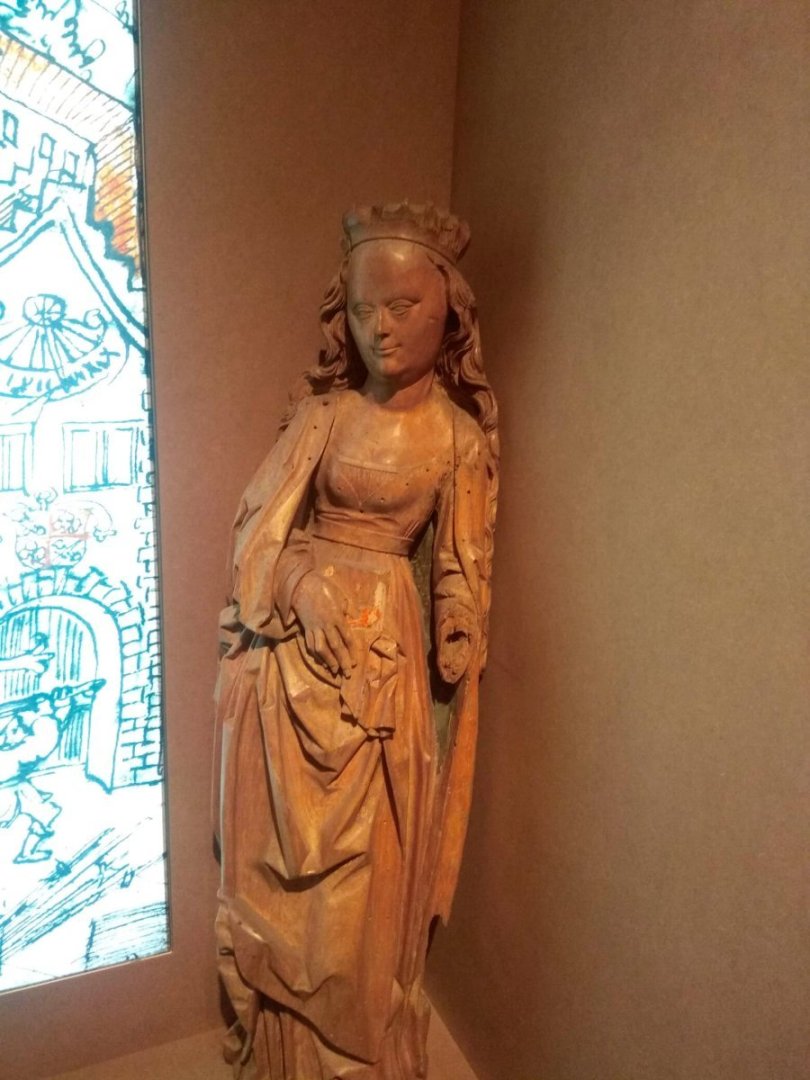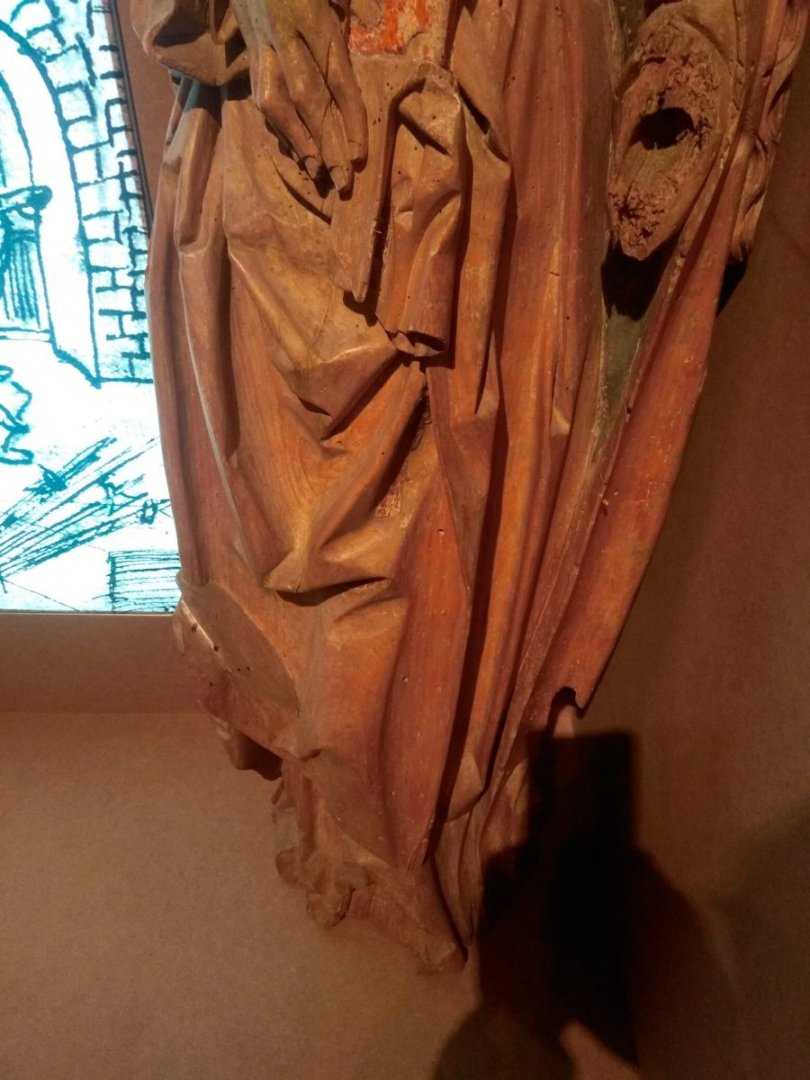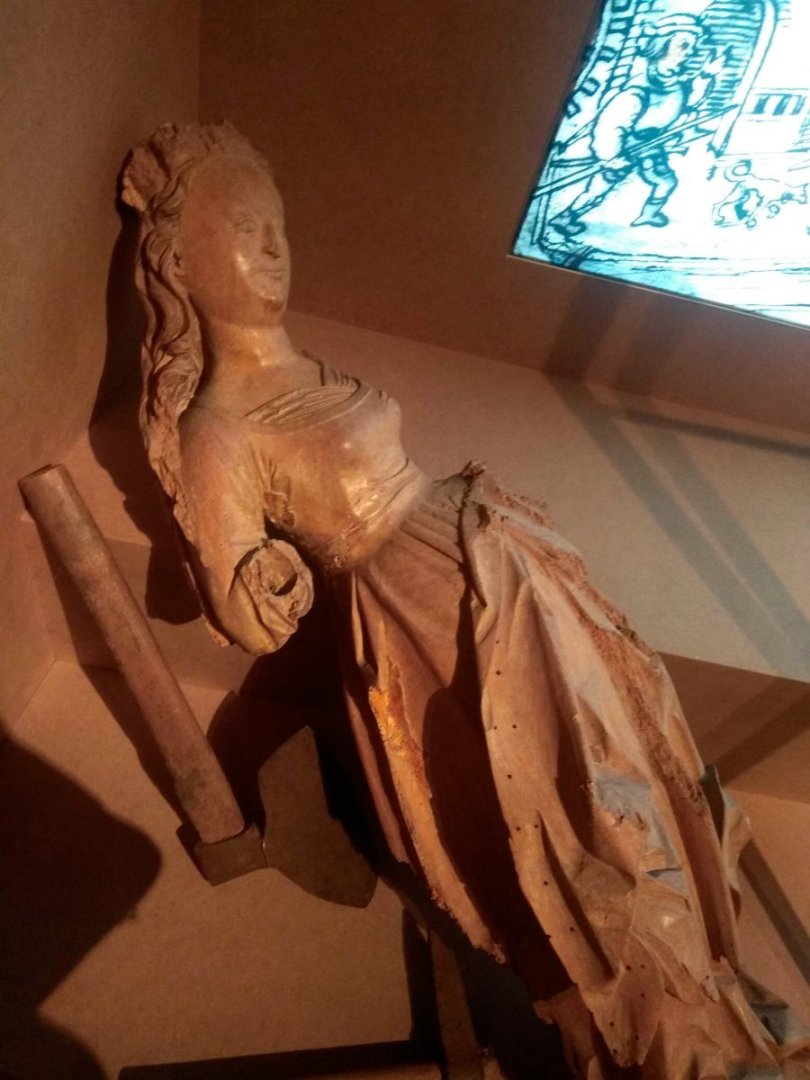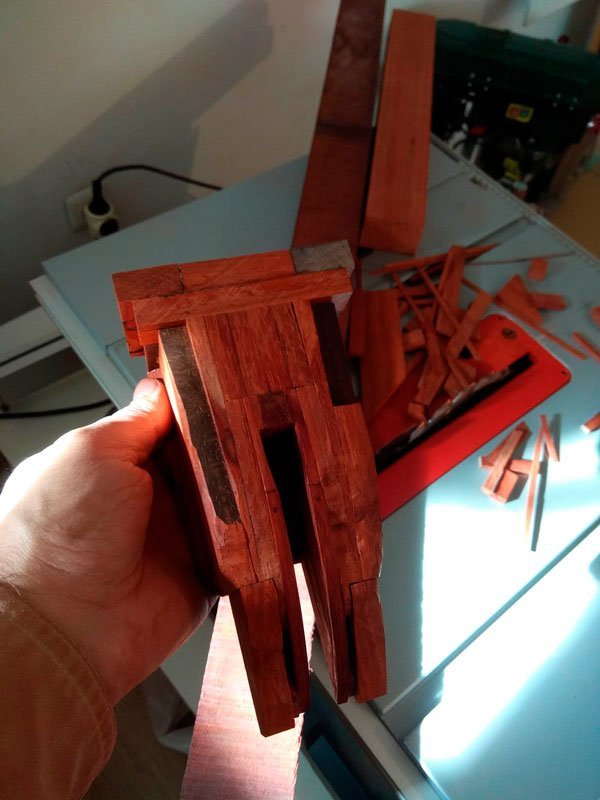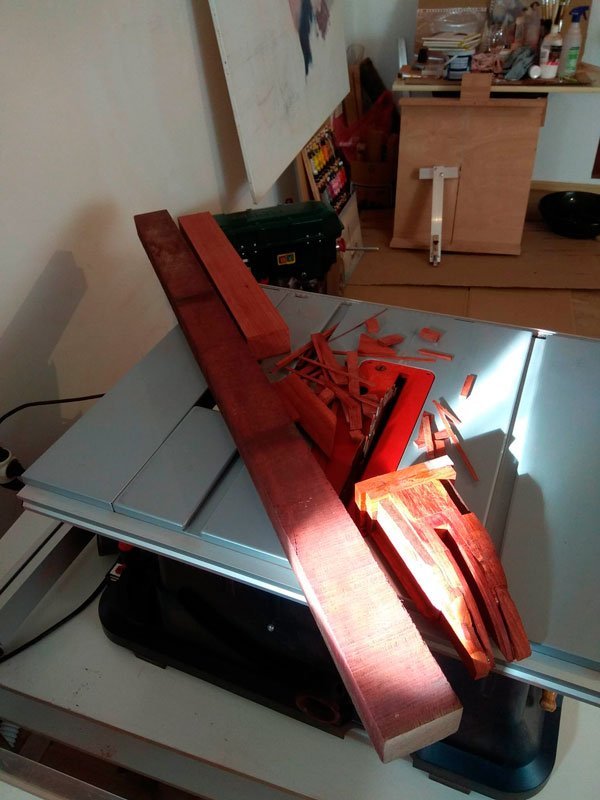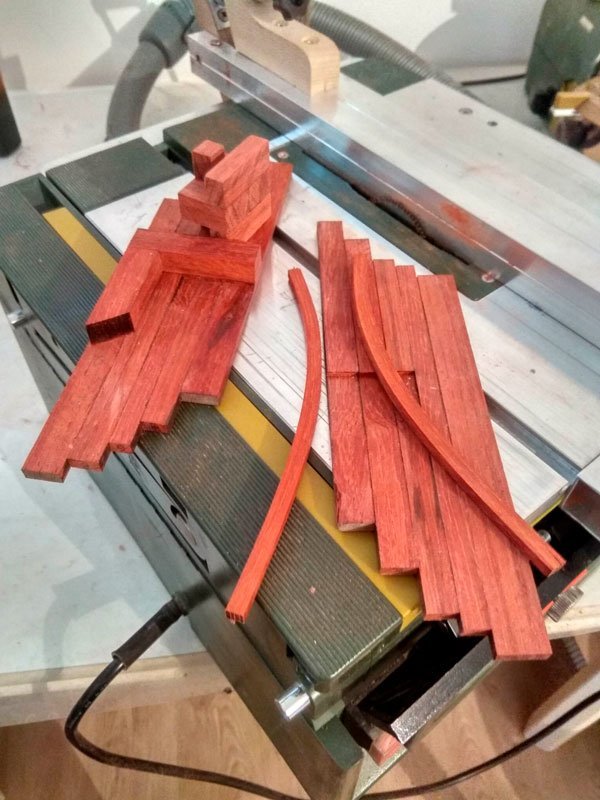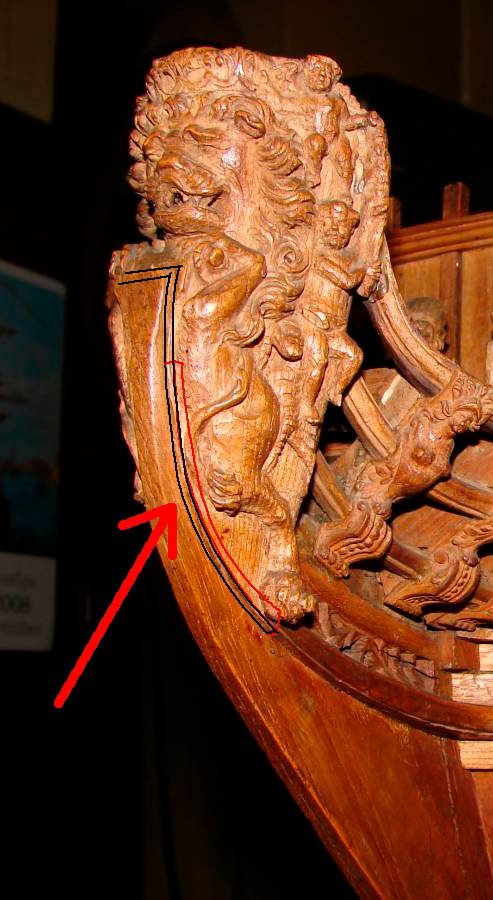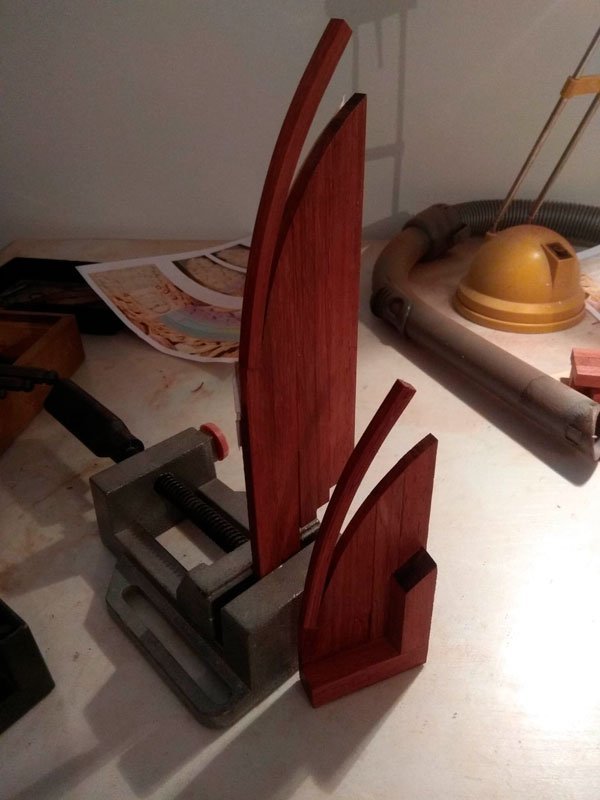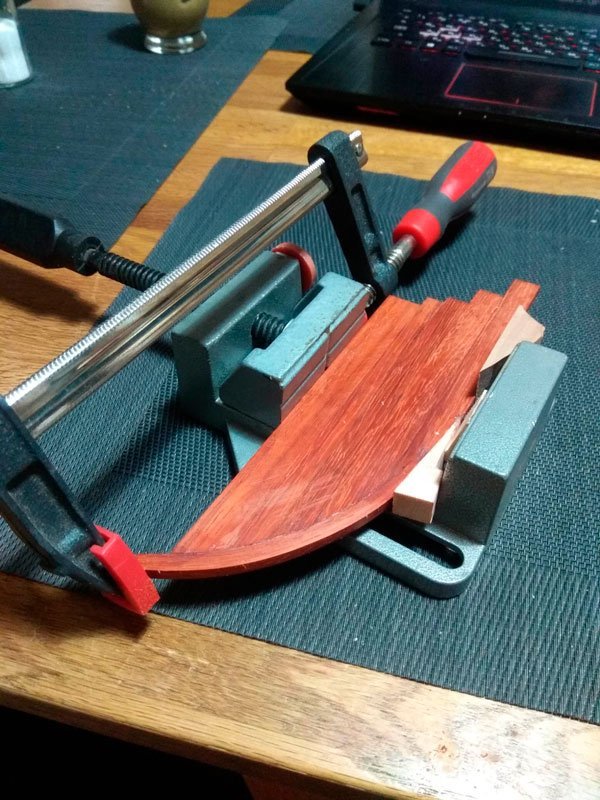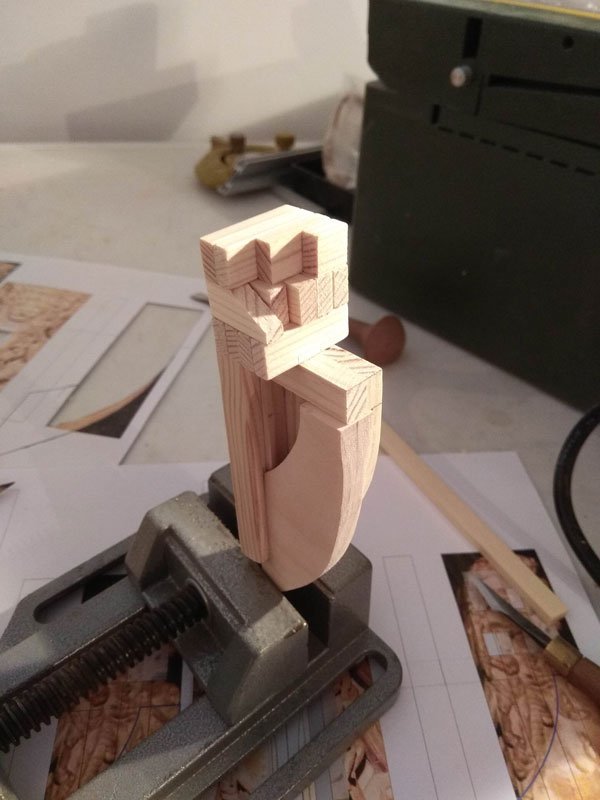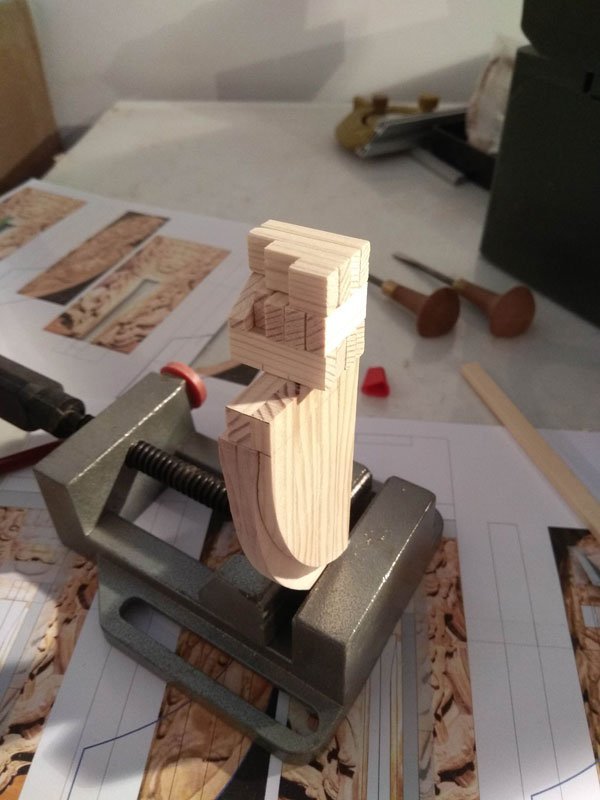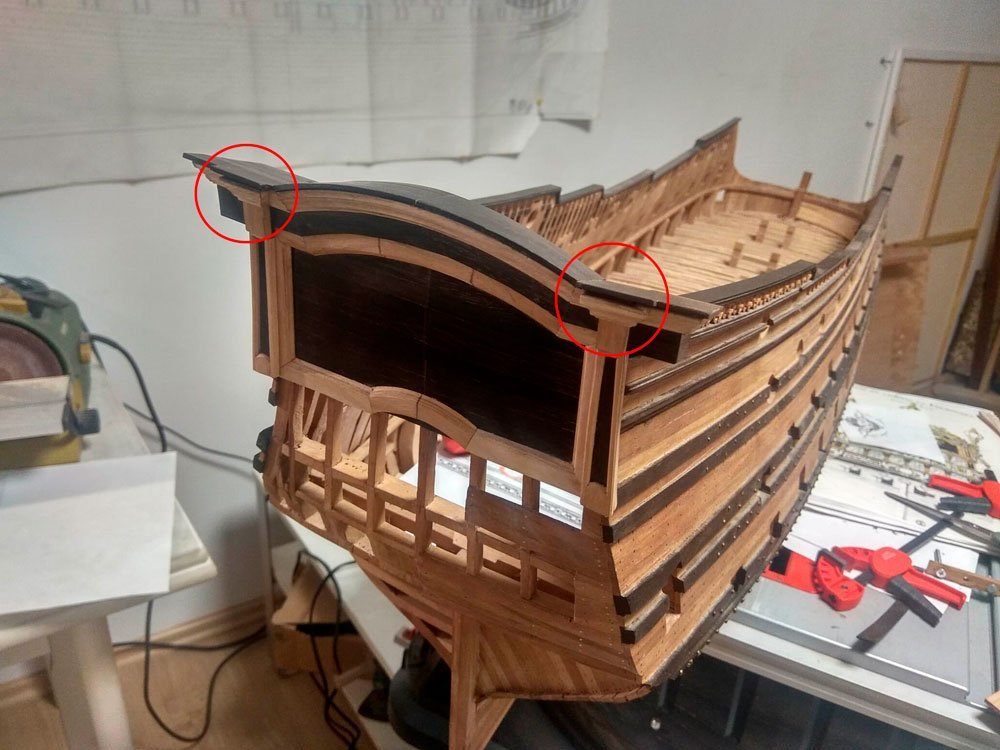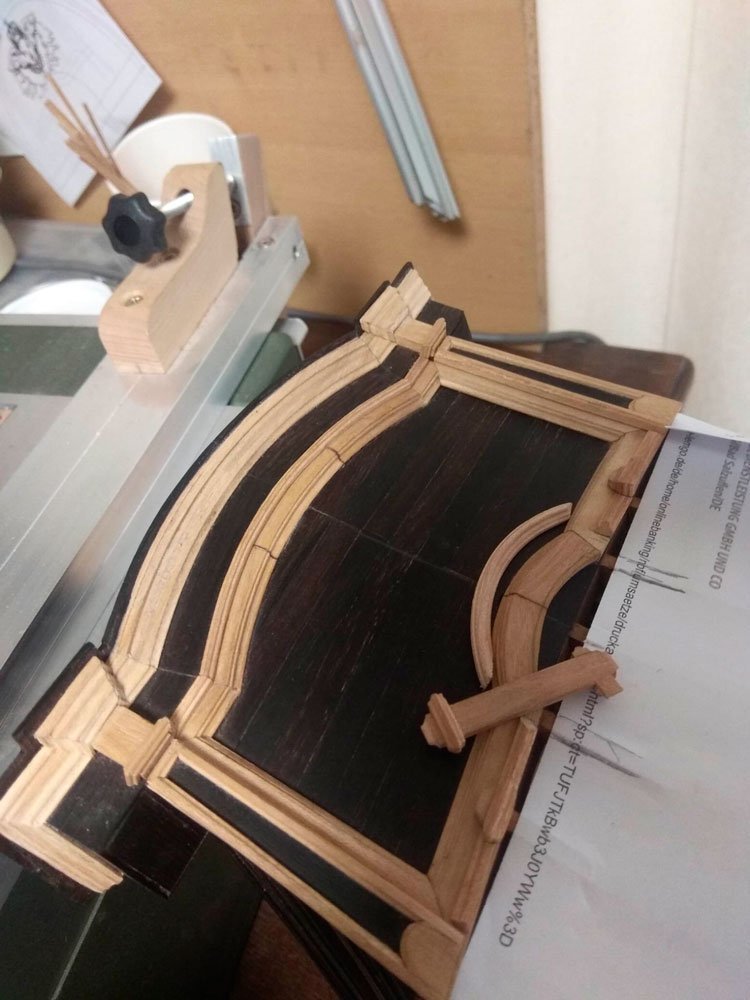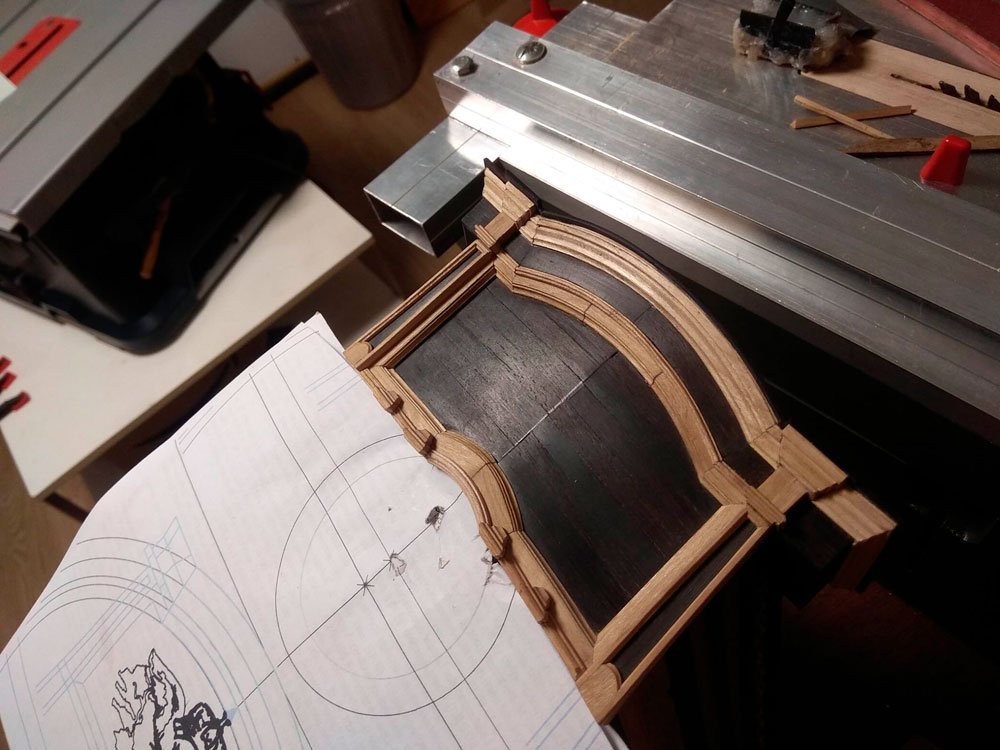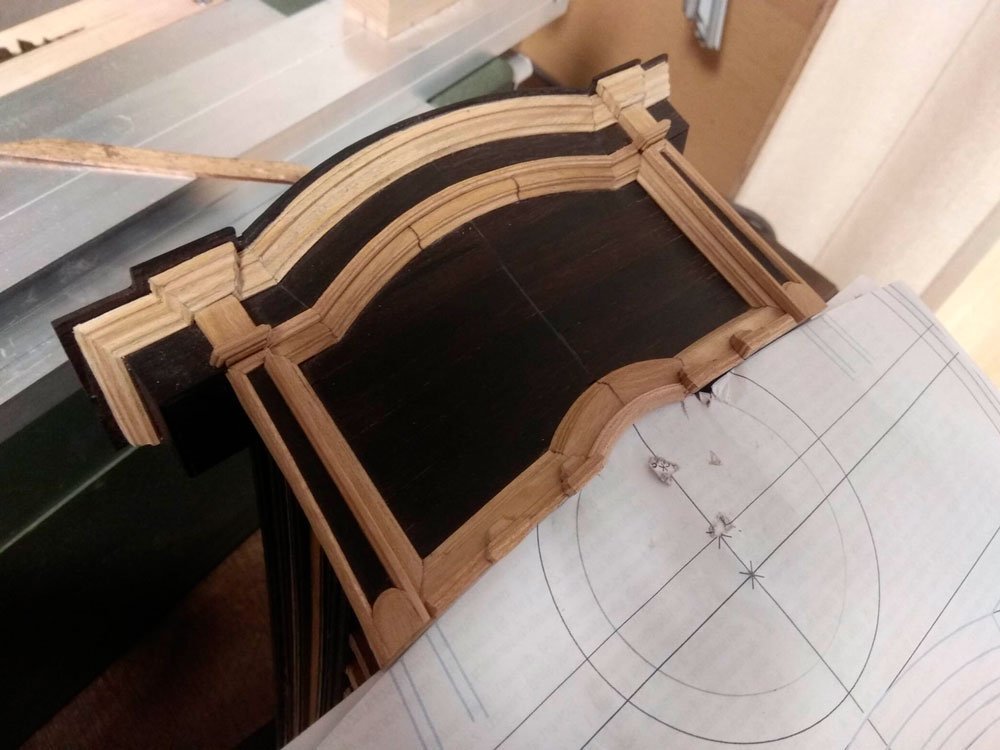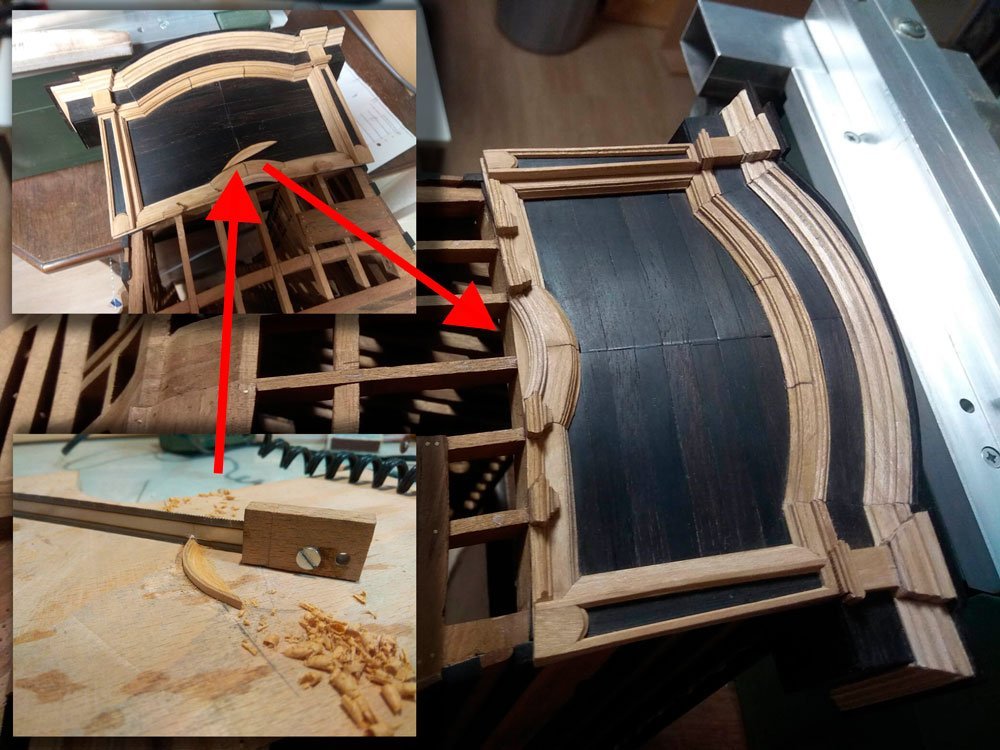-
Posts
234 -
Joined
-
Last visited
Content Type
Profiles
Forums
Gallery
Events
Everything posted by HAIIAPHNK
-
The first question I can ask right off the bat. I was suddenly thinking about this. Were there ever any cases where two or more ships were made as one set? So that together they would add up to a single overall idea? A lot is known about the existence of sisterships. But I can't remember instances when ships were not just made according to one set of drawings, but were "relatives" in names and decorations? Are there any such cases at all? I will be able to ask the second question later, as I need to do a bit of photo searching for that. Might get a chance to ask it tomorrow. So please don't run far away from the computer 🙂. I would really like to continue the conversation as soon as possible.
-
Hello, empathry. You continue to supply tons of interesting information. Thank you very much. I have already read somewhere about Beren as a not very skilled artist. But this is the first time I've heard about the decor below the water level. I'm in the evening now, my spouse has already gone to bed and I almost woke her up with my laughter. Or maybe I did. But I won't know until tomorrow morning. Reading about your certainty that the content of the sketches does not carry the idea, I was upset. Of course, you may be right. We humans have a tendency to romanticize the past or the future. Or to see them in darker colors than they actually were. And we imagine the era of palaces and baroque ornaments as a time of elegance and refinement. Men were gallant knights and ladies were refined and beautiful. And at the same time we forget that even in luxurious palaces there were snuff boxes for catching fleas and colognes, with which they tried to stop the odors of dirt and excrement. Everything existed at the same time. So you may be absolutely right in what you say. But it would be a shame if the sculptures we're looking at really didn't have a particularly subtle intent. Then I will pause this line of questioning. There is no point in examining the details of Jupiter on Fulminant with the same magnitude. But I do have to ask a couple of questions.
-
Hello, empathry. Thank you very much for such an extensive material. I found a lot of new things in it for me. For example, I first learned about the Salamander as a Christian symbol. Before that, I thought it only had roots in ancient myths. You really surprised me. Thank you for clarifying the question about the extent to which two ships can be "related". I had thoughts that they are two parallel projects that are not connected together by a strong bond. The fact that they were made in different shipyards and by different craftsmen gave reason to consider them separate and independent. But at the same time, I needed a good reason to put a point in my brain and to be convinced that this was the only way and no other. I thought about the fact that in terms of structure and design they could be (and were) different ships, but in terms of symbolic meaning they could also carry some one story. And I was more concerned with the decorative difference in my question than the technical difference. And the story that the decoration of the two ships tells. I don't remember exactly what the scientific term is called, when a person makes up logical chains and connections in his head. And finds such justifications that he starts to believe in them himself. That's probably how a lot of conspiracy theories come about. So I realize that in the search for hints you can go very deep and come up with fantastic versions. But I also think that art now and art then are two big differences. You said that you are a Musician and have a good understanding of music. So I will give you an example that you will definitely understand. I once met an organist (a person who plays the organ). And he told me about the story behind Bach's Toccata. And I was just amazed. It's an epochal work, it's impressive. But when I learned that it is not just a beautiful combination of sounds, but that there is a story in its structure, the power and beauty of this work became a hundred times stronger and more impressive for me. I've studied painting and I know for a fact that there are so many nuances and clues in fine art too that carry additional information. And I like to look for such nuances. So I am in a very strange position. On the one hand, the decoration of the ship absolutely definitely has its own subtleties, it's not just a collection of different patterns. And on the other hand, you have to be careful, otherwise you can find (invent for yourself) meanings that the artist didn't have. So I've already spent a lot of time trying to find some story that involved Jupiter and Apollo. Maybe jointly, or maybe they were opponents. So I'm already halfway to possibly creating a new conspiracy theory. This is a joke, of course. But there's truth in every joke. And in order to see if there was a possible connection at the level of symbolism, I had to, as a detective, look at this version as well. So I want to thank you again for your hard work. It ranked high on my "evidence, alibis, and testimony" list. I have a lot of questions about Jupiter. And you've raised some of them. But I'd like to put that aside for a moment. Tell me, do you have any information that concerns the figure of Apollo? What do the objects that accompany him mean? Maybe you know why he was depicted in this particular image? Maybe you know something about the design of the transom of this ship? I want to postpone the topic of Jupiter for a while for the reason that this sketch has just been found. And figure A... has been known for quite some time. Many people have built this ship or may have read some studies that deal with it. So the chance of finding people who can share something new is higher. In the meantime, I'm reading and looking for information about the Jupiter. Maybe there will be more out there over time that I can subsequently show.
-
Moving on. This is how Chewbacca's appearance looked after some time. I collected all the segments and the block with the lion's face back into the general figure and was about to continue working.... In this shot you can see the pencil marks below the chin. These marks show me where Wookiee's front paws will be. I was going to do them. Later in the story, I will pay attention to this. but suddenly... It wasn't the muzzle itself that had fallen in deeper. I myself reopened the figure a second time and moved the muzzle deeper. I actually put the muzzle back where it was supposed to be. I thought about it during assembly and moved it a little closer to the surface. But I decided that was wrong and put it back where it was. So why did I decide to make the adjustments first and then undo them? The answer is obvious, I just realized I had made a mistake. The thing was, the muzzle didn't turn out right on the first try. It took me quite a while to get used to the padouk, I didn't like the way it cut. Even when I could comfortably rotate the little element on the table with just the muzzle glued to the plywood. Even that I could comfortably reach tools at all angles and from any side. I still really didn't like the way the wood behaved. It wasn't cutting, it was splintering. I was worried, cursed the paduk, cursed myself, put everything on the shelf and tried to calm down and think of what I could do differently. And after a break, I cut off the faulty attempts again and tried again a little deeper. And when the muzzle is lying separately on the table, is it hard to tell if it has crossed the line or not? Has it fallen below normal or not yet? I had an idea in mind that a segmented blank might give me a plus here as well. Since I won't be able to see what's inside, I can just move the whole portrait segment closer to the surface. That's what I did. However... In these shots, you can see that I managed to carve out the lion's paws. After this stage of work, I was convinced that I was worried for nothing. And I lifted the face closer to the surface for nothing. After examining the photo with the original figure and comparing it with what I had, I came to the conclusion that the portrait is too close to the tips of the paws. So I took the blank apart for the second time and returned the muzzle to the depth it should have been originally. Now it was exactly where it needed to be. In this shot you can see that I was about to transfer the carving from the muzzle to the rest of the body and had already outlined the element with the lion's ear. Now it has separated at the seam and will need to be done again. And here you can see that except for the ear the whole side is already plowed in rough plowing, places of figures and detailing with mane and tail are outlined. All this helped to estimate how close to the surface the face is located. And the last shots for today show how the blank looks after I removed the overhanging edges around the face. There is still a lot of work ahead, but more on that in the next issues. to be continued...
-
But who is ambitious here? Usually this word is applied to someone who decides to challenge the stronger. If there is a long-time champion in the ring, who does not know defeats, and a young fighter comes out against him, it is the newcomer who is more likely to be called an ambitious fighter. You can't say that about the champion. The champion ambitiously went to the fight against a newcomer that no one has heard of! How can you say that? No. So why was Apollo chosen for a ship of that name? After all, the whistles and the shepherd's bag on his shoulder hint that these are his trophies, which he has just taken off the defeated Marsius. If this particular confrontation was intended, it is hard to call Apollo Ambitious here. After all, he had other victories, for example, over the huge serpent Python. Now that feat fits much more under what might be called ambitious behavior. In the context of the conflict with Marsius, one can draw quite different conclusions. For example, we can call ambition a negative quality. And then Apollo is the one who punished for this quality the one who decided to challenge him. In politics, this can also be noted. For example, the king on the throne believes that he has the right to rule by the supreme law. And anyone who wishes to defy him is only a nothingness and trash who has forgotten his place and encroaches on what he cannot be allowed to do. Don't be proud or I will punish you severely! Maybe that's the meaning behind the name and decoration of the king. This may be true, especially remembering the ego and self-aggrandizement of the Sun-like Louis. Such a ruler was quite capable of showing everyone around him, both inside and outside his country, that he was two heads above the rest and would not tolerate challenge. But again, it doesn't all add up. If this version presents ambition as an undesirable, wrong quality of an upstart, then that's not how the ship would have been named. On the contrary, it would be something else. Something that emphasizes the right to rule. Justice. God's power. Anointed. Anything at all. But the ship is called Ambition. And it's stumping me. I can't figure out exactly what the idea is here. Maybe it's not Apollo. Maybe it's someone else. For example, there is something in this figure that very much breaks all the previous hints and found versions. It's the wings. I doubt any ancient character has wings at all. Unless Pegasus. But this thread leads nowhere at all. The only direction I can find is biblical references. Could it be some kind of angel? There are references in the Bible to angels blowing trumpets. But no matter how many times I look, the biblical options don't fit here at all. Especially when you look at the other symbols: bag, wreath, helmet. In a word, I can't fully understand what exactly this figure wanted to show. I will not mention the bas-relief on the transom of the ship. Especially since I have practically no useful information on it at all. I am sure that there must be something there that will tell better about the meaning that was put into the decoration of the ship and its name. If anyone has anything to suggest, I'd be very happy to hear all versions or accurate answers. It's not all that simple with the Fulminant either. And I have questions, but they are best put aside for now.
-
it just so happens that my introduction to the Marsius story started with this picture. And that put an imprint on the angle from which I perceived the whole story. So I'm going to tell the story of Apollo in a different way than it is described in other sources. What do you think of her? What feelings does it evoke in you? What is it depicting? The plot is quite simple. There aren't a lot of participants flashing before your eyes. And it doesn't take time to make out their movements and understand what's going on. There's a young satyr playing a piper. Again, I don't know very well what kind of instrument it is, I know that it is definitely not a saxophone, but I'm not sure about the rest. So sometimes I can randomly use different terms, for which I apologize. But let's get back to the picture. The general mood can be called peaceful, everything is calm, even the frightened hares are serenely lying down and listening to the young Marsius playing. These little animals are depicted here not only to convey peace. They personify the satyr himself. He is just like them, harmless and naive. A person who is not familiar with the plot does not guess how disturbing an idea the artist has put into this picture. To fully understand the drama, one must familiarize oneself with ancient mythology. One day the goddess Athena invents a flute - and immediately throws it away, and even with a curse: she did not like how ugly her cheeks swell when playing. Marsyas, a goat-faced satyr, a forest dweller and friend of the shepherds, was lucky enough to find the instrument cursed by the goddess. Marsius himself mastered the flute quickly, and taught it to his friends, so that the instrument, which was simple in manufacture - a reed stalk and seven holes - became a favorite pastoral pastime. But Marsius, to his misfortune, did not confine himself to his immediate surroundings. Emboldened by his musical success - all the beasts of the forest gathered to listen to him! - he challenged Apollo himself. The end of the contest was as painful as it was predictable: Apollo, declared the winner, orders Marsius to be tied to a tree and skinned as punishment for his insolence. Therefore, knowing what would happen later very pitifully for the young satyr. The plot of the contest or its sad ending was drawn by many artists. And completely different emotions reign there. It is either a noisy banal argument between two musicians. Or almost sadistic pictures of the torture of the loser Marcius. In many sources, Marsius himself is shown as a negative character. He - an inferior being decided to challenge the most talented Apollo out of pride. And the punishment from him was deserved. In the same painting, the artist Elih Vedder took a completely different path. He shows Marsius not an experienced and cunning old man, but a young boy. And the root of Marsius' self-inflicted misfortune is not pride, but naiveté. It was not AMBITION that pushed him to challenge Apollo, but childish delight at the music he had just discovered. Foolishly, he had thought that Apollo, too, simply liked to play, and that the competition would be friendly. How was he, raised in the forest, to know that sophisticated culture could go hand in hand with sophisticated cruelty... Of course, we're talking about a fictional story here. Even historical events can be interpreted from different angles, and in each case there will be a hero and an anti-hero. Let's not talk about a fairy tale. We can't tell you exactly what Marsius was like. Whether he was a naive young man who suffered from Apollo's jealousy or whether there was some evil intent in his challenge to the contest, because the winner should receive any reward he wishes. We are now discussing only the figure on the breakwater of the ship. And it is time to return to him. A little above I have specially emphasized the word which we had to single out from the whole ancient story about the contest between Apollo and Marsius. It's Ambition! After all, it is this quality that is presented as the name of the ship, its motto, its personification.
-
Who is it? I have only indirect guesses. And they don't give me a definite answer. The figure has details that seem to mix together elements from different stories. If it were a modern interpretation, it could be described as follows: The figure is wearing a tight-fitting tricot with a spider in a web on the chest, a belt with a wide bat-shaped plaque, the figure holds a large hammer in one hand and a round shield with a star in the other, and a cloak with a stylized letter S fluttering behind him. That's roughly how I see what's drawn in Ambissier's sketch. So who is it? The quickest theory that comes to mind is that it's Apollo. What do the details in this figure symbolize? In one hand we see a dudki or some other wind musical instrument. On the same hand hangs a wreath. On the side we can notice a bag. These objects can be attributed to Apollo. So the wreath (made of laurel leaves) can give a reference to the story of Daphne. This tragic story is about Apollo's love for her, but the girl did not want to be Apollo's lover and asked to be turned into a laurel tree. And from that time Apollo had a special attitude to this tree, and the laurel wreath became a symbol of his feelings, and afterwards a symbol of Apollo himself. So the wreath could speak of Apollo being in front of us. What then must it symbolize that this wreath is hanging on his arm? Why isn't it on his head? And the wreath is exactly hanging on the arm, as if it has nowhere to go. That's how I tend to act when my hands are full. I can hold long objects with my arm against my body by placing the weight under my armpit. And something in the form of a ring I can put on my hand. But in the sketch, the figure has his other hand free. And why isn't the wreath on his head? Why is there a helmet? I have never seen any mention that he was once in military attire. Who are some of the ancient characters usually depicted wearing a helmet? First and foremost I think of Mars or Ares. These are the Roman and Greek gods of war. In the second place Athena or her Roman counterpart Minerva comes to mind. Maybe someone else wore a helmet at certain moments, but I don't quickly recall such instances. Nor do I recall Apollo wearing a helmet. Then it's not Apollo, but Mars? This version is possible, but in my opinion Mars has a lot more questions. Why does Mars have a wreath? Did he triumphantly defeat someone? Then why is the wreath hanging on his arm as an unimportant thing for him. If the warlord is victorious, then the wreath on his head signifies his feat. And victory means the battle is over and he can take off his helmet. If the helmet is on his head, it means that this figure is in battle right now. But then it is too early to talk about the wreath, he has not yet won the victory. It is much more logical to assume that Apollo is here. The wreath is a permanent symbol for him. We can assume that he entered some military confrontation, took off his wreath for a while and put on the symbol of war. Why then is the wreath not in his hand? He has one hand free. In ordinary life, it could be an accident. But in this case, every little thing must have a meaning. A normal person would leave the wreath hanging only when the free hand is needed for specific actions. What then does the gesture of the left free hand mean? Is Apollo fixing his hair? Does he want to remove his helmet? Or to scratch himself? If he is about to take off his helmet, it could mean that his fight has just ended and the helmet is no longer needed. But in that case, wouldn't it make more sense to draw this figure a few seconds later, when the helmet is already in his hand? In this case, the gesture is not quite clear. And there are questions to this version from another point of view. The figure is standing on the breakwater of a warship. Usually the main figure should show either readiness for battle or determination already in battle. The moment after the battle looks more questionable to me. So maybe I'm wrong and Apollo is not going to take off his helmet? Maybe this gesture means something else? But what? He's not scratching his forehead, is he? What do the stars around his head mean? Perhaps it is again a symbol that is added to further strengthen the understanding that it is Apollo who stands before us. Among his many qualities, he is called Phebus, which means radiant, bright, shining. Though perhaps there are some other characters who could be shown with stars? I don't. If you approach it ironically, it all comes together: the stars around your head, the hand that scratches your head looks like a moment from a cartoon. Tom and Jerry. Tom is once again hit, knocked on the head. It makes stars fly above his head, and he's confused, scratching the bump where he's bruised. This is the place for a joke, of course, it can't be used in serious reflection. I just don't have anything else to add, I am at a loss and don't know what exactly is encrypted in this place. Let's move on to the following hints and symbols. What can we say about the musical trumpets. I don't know what to call them properly: dudes, whistles, vuvuzelas or something else. This object, in my opinion, again returns to the fact that Apollo is in front of us. And we should consider the pipes together with the bag. There is one story in the legends of Apollo that is different from the others. And if Apollo in other adventures is personified as the god of beauty or patron of creative people, poets. In this story, Apollo shows his other side. And it can be interpreted very differently. This is the story of a contest with a satyr named Marsyas. And I'll describe this part a little bit later.
-
What a pleasure to be in the company of people who are so deeply versed in ship engineering and French art history. Maybe you can help me find answers to some of the questions that keep me awake? I have long been concerned with the subject of symbolism in art. And how this theme is revealed on a particular moment - the ship Fulminant. Here I need to describe my question in more detail. We have already discussed it when we were trying to guess what could have stood on the ship's breakwater. What kind of sculpture would be there? And we ended up being right in our guesses. And it would seem that the fact that we found archive sketches with an accurate depiction of the main figure completely removes the question from the agenda. However, that's not entirely true. I am concerned and interested in who it is? Is it really Zeus? Or is it more correctly called Jupiter. Is it definitely him? Why do I have questions? Let me try to explain. According to various sources, the Fulminant is a ship that was built from the beginning as a paired project with two ships. Fulminant and Ambitieux. Is that right? What in this case should be understood as a pair? These are two ships that started out being built on the same project, but it was just a cost saving for the engineers. They came up with one common framework, and then each master craftsman does whatever he wants? And then the ships have nothing to do with each other. Or did the pair of two ships have one common idea, one goal? If ships had names... mm-m-m-m, Phobos and Deimos, their unified meaning would be obvious. But with the existing names, I don't see anything unified. They are more independent. Or am I wrong? And now I will move on to narrower issues. Let's first discuss the main figure in Ambitieux.
-
Yes, Empathy, it's amusing. Really our nicknames have something of the same direction. Being a friend without having empathy is impossible. And it is very interesting that you decided to have this conversation about nicknames. Thank you for reading my posts and for your high praise of my work. It's very inspiring.
-
So, this nickname is a Russian word written in Latin letters. Once upon a time I chose this nickname for one of the online games. In the game it was possible to call your character only with the English alphabet, and already in the game I communicated more with those whom I understood better. These were people from Russia, Ukraine and other parts of the world who speak Russian. That's why it was interesting for me to write my nickname in such a way that no matter what the English letters were, anyone could understand the meaning of this name correctly. The special nuance was in some letters that are in the Russian alphabet, but they are not in English. And I found a way to use such symbols so that they look like the right letters. Once I already had an account on this site, it was on that account that I started this very topic. But unfortunately that account has been lost. It's a long story, I've written a bit about it. If you're interested, you can flip through the pages and you'll find a place where I talked about this event. When I started a new account I remembered about this nickname. I got used to it and decided to use it. It is useless to look for some kind of kinship with English words in it. In this case, it will still look like I fell asleep at the computer and dropped his head on the keyboard, which formed a random set of letters. My nickname copies the Russian word, which is spelled like this "Напарник". And if all the letters are capitalized, it will look like this "НАПАРНИК". Now let's put together the Russian original and the English clone variant: НАПАРНИК - HAIIAPHNK. In English, it means "Partner." Someone who helps at work, or someone who sits next to you in a police car, likes doughnuts and is ready to protect you from a gunshot. I'd like to think I can work in a team and be a helpful and responsible friend. At least that's the kind of person I'd like to be. And I try to behave in a way that makes people around me feel comfortable and at ease. It is not always possible to be a perfect partner, sometimes it can be very difficult with me. But I try. That's the whole meaning I wanted to reflect in my nickname. It's hard for me to find the right word in English, and this was the first option I decided to keep as a result of my choice. I am well aware that the meaning is not clear to everyone. For the vast majority of people it is just a set of letters. That is why I indicated my real name. It is certainly common and easily understood by everyone. So that you do not have to go through the trouble of typing, you can address me by my first name. And use any spelling you like, either the full Alexander or the short version - Alex. For me they are both acceptable. At home I am generally called Sasha. Don't be surprised, this is the standard variant of my name in Russian. The short version. Yes, I know it's strange in many countries, and they are completely different words. But other languages have something similar. For example, the abbreviations of names like Richard to Dick, William to Bill look roughly the same to me. And so on. Well, or you can write the English version of the nickname - Partner. This will also be much easier for you. As you prefer.
-
And finally I'll answer your question about my nickname. It also directly relates to the difference in languages. I've been thinking for some time how best to answer it. And I had two options. In the end, I chose both. How's that? If suddenly there is someone near you who is familiar with the Russian language, maybe some friend or acquaintance, maybe at work there is a colleague who speaks this language, then I would like to suggest that you show this nickname to such a person. Somehow I think that you will have an interesting dialog, he will be surprised at first, then he will smile and you will get something new and positive. In this case, just don't read what I write below. Below will be the second answer option. Just in case you don't have acquaintances with knowledge of Russian language. And in this case it's easier for me to give a full answer myself.
-
I'm not quite sure how I interpreted your words about being eaten. I assume that's your reaction to what I said. I may have used the word myself. But unfortunately I could not find such a place in mine. It is also possible, because different translators may translate the same sentence differently. In one place it is perceived as a positive expression, and in another, next to it already as something negative. So I find it hard to know how to react and what to say. In Russian, the expression "eaten by work" has a positive, good context. Here we are not talking about something that can be compared to an attack by a wild animal, a shark, or something that can harm or kill. When they say that a person is swallowed up by his work, they mean that for this person his work is very important. He completely "dives" into it. He doesn't just have to or have to do the job. He enjoys it. "Amazingly, it was already evening. I hadn't even noticed how quickly the time had flown by. I was so swallowed up by my favorite activity that I didn't even notice that it was already time to go home...". So if these words have a different meaning in English, I apologize if I may have been misleading. I may not have used those words in my text. Then I apologize for not being able to accurately understand the essence of your words.
-
I'm not sure I explained it correctly. Let this be an additional attempt. In the topic I try to describe the emotions I had at the same moment of work. If there were doubts, I write about them. If there were problems, I tell about them too. But as time moved on, I found answers. In the next parts of this story I will write what exactly was the reason for eliminating doubts, how I found a way out. And so on. You know? Imagine you are watching a movie. It already has an ending, it has already been filmed. And it's bound to happen. That's not to say that I want to stop you from writing about your prompts. It doesn't. By all means, write. I may not know what you know and your tips can help a lot. Except I definitely won't be able to make any changes to this work anymore. It's already finished. I will only be able to remember my mistakes and avoid problems in future works. I really do not want to unwittingly turn out that you said something really important and useful, and tomorrow I will publish the next part, as if I did not want to listen. And that it doesn't make for an awkward situation. Oh, I'm not good at expressing my thoughts in two words. In ancient Sparta, where they loved precise and short phrases, I would definitely have been executed long ago for writing too long. I know it's my flaw. I hope I was still able to explain my thoughts.
-
Thank you for the additional information about the paduk. Thank you for your warnings about the variability in the color of this tree. Where do I begin my response? Well, I think I'll start by letting you in on a secret. In fact, what I am posting now about the Russian lion carving is actually a retrospective. That is, it describes events that have already happened. At the moment, the work with this figure has already been completed. And I am telling my story already knowing how it will end. At the same time, I want the story to look like a story, a tale, an adventure. And not just statistics of step-by-step demonstration of work. I don't know how true that is. Most likely, this option has its disadvantages. First of all, short posts that don't take much time to write are much more popular now. Secondly, I realize that since I am not a native English speaker there are a lot of mistakes in my posts. It's hard to read that kind of stuff too. And I didn't immediately decide on this style of posting. I hope that with disadvantages there are also pluses. For example, if a person has never encountered paduk, it will be useful for him to learn about the nuances of this material. So I try to remember not only the positive discoveries, but also the problems. Also, I hope that this style can help someone to try carving something themselves. The finished sculpture might look too complicated. But when you see that it was a simple log at the beginning and the first steps don't look so pretty. More like weird ditches in a field where potatoes are supposed to be planted or just dug up. It goes to show that just because you have something similar in the beginning doesn't mean it's bad at all. A little patience and gradually things will start to change. Plus, describing funny moments or minuses makes the story more alive, real. I feel like this. Maybe it's my own delusions, but it seems to me that there's been less socializing on the forum pages lately. And I want people to get more interesting reading experiences. And more socializing. And this is easier when there is not only useful information, but also descriptions of emotions. Here you are, by the way, a good example of this working. You wrote a lively and interesting commentary. And I'm very happy about that. ---- You guessed some of the themes that should appear in the next issues about this Wookiee. And now you've mentioned some of the nuances of Paduc, which I'll also cover a bit later. I'm not afraid that the paduk will change a lot over time. You could say that this particular lion project is immune to many problems, including the question of what the paduk will look like in a year. I am free from the need for the color scheme to remain exactly a certain color or tone. For example, in the Fulminate project, experimenting with paduk would have been much more dangerous. Here there is no problem with that. In the collection, there will be lions of different material side by side. Some will be light, others dark. I don't have to worry about any of them turning yellow or dark over time. I am absolutely sure that after some time the Russian lion will become very different from its current color. When I showed the very first shots of the purchased firewood, you can already see there how different sides of the same bar look different. I am ready for this. I'm even interested in it. If over time my Wookiee looks like very old and darkened wood, there will be the effect of an ancient find. And I'll be telling stories to all the visitors that I actually found this figurine in the basement of an ancient castle. And I will look at the surprise of gullible guests 😄.
-
Hello. Your comment really impressed me. And this is the second time in a short time. First I was impressed by your posts about your thesis work on French ships. My project with "Fulminant" is my first introduction to the French school of shipbuilding. I had read some before, but I didn't have much experience. So it is very interesting for me to learn new things. And I am very grateful for the links I got thanks to your posts (+comments from other members). I have put them aside and will try to familiarize myself with them more. But since the topic with Fulminant is very extensive, it would not be right to talk about this ship in this thread. I know myself how far I can stray off topic. And then the thread about my carving work will very quickly become a duplicate of the thread about building the Fulminant. And now you surprise me once again. In Russian there is an expression "a bear stepped on your ear". This is what they say about someone who has no musical ear. A bear stepped on his ear. Well, I've had not just one bear on my ear, but a whole family of bears. And they didn't just walk on my ears. They probably had a picnic there and hung out for a season. That's how far I am from making music or singing in any way. The only thing that makes me feel better about my situation is that there is a practical use for my singing. When I start singing, all the mosquitoes in the neighborhood start disappearing. I once personally witnessed one of them desperately banging his head against the glass in an attempt to escape from my house. And he was desperate. Since then I sing very rarely and only in self-defense. 😄 So, for me, I see all people who can sing or play musical instruments as special. And I even envy those who have this gift. So I take my hat off to you. Now, let me try to answer your questions. I'll start in order.
-
Geometry is one of the most interesting sciences. In my opinion. Of course, I will not argue that algebra, physics or chemistry have their own beautiful masterpieces. Our world is designed ingeniously and in it different sciences complement each other. And when you are engaged in the construction of architectural forms, you can feel yourself a little creator and see how you can solve complex problems with the help of a circular or the simplest measuring devices even without knowing long formulas. When it is not possible to do so, one can still feel the splendor of these tasks. And the fact that they did not succumb at that moment only emphasizes that this is really science and not just random lines on paper. I'm interested in this question too. Tell me more about it, please.
-
Well, the carving itself has begun. And this story needs to start with a splash page like this. Why? What does this have to do with Lucas? What's the connection? Don't worry, you'll figure it out in time. All you need is a little patience. You can imagine me writing this in Master Yoda's voice: Be patient, young padawan! Trust the force! In the meantime, I will begin my story. Even as I was getting acquainted with the paduk planks that came with the package, I realized that this wood would be different from the way the carving wood I normally use behaves. And those assumptions began to be justified within the first few seconds of working. Paduk is cut quite differently. Sometimes it splits not at the point of the cut, but randomly somewhere nearby. And you can't call it a cut anymore, it would break off and leave chunky chips. So I had a question right on the first day, maybe I was wrong in my choice of material. Maybe I should redo the whole thing before I go too far. If the paduk continues to behave like this, I won't be able to do a good job. I'll just waste more time. But I didn't throw out the paduk. I'm not sure why? There's an expression in Russian called "taking on a weakling." It's when you're specifically told that you're too weak and won't be able to cope with the task. And usually in such a situation you want to do everything possible to prove that this is not true. That's pretty much how I felt. Even though I didn't like what I was getting, I wanted to keep working. I'm a man! I have to do it! To this I talked myself into thinking that this was just the beginning. It should take time for me to get a better feel for the unfamiliar wood. And when my hands get used to it, it will be much better. After all, the stage of work, when you try to remove large pieces of excess wood is always different from work with detailing, when you already cut thin slices. Most likely the paduk will not break off as much as it does now. So I kept working. It was a strange phase. Unlike other sculptures, I was working and not enjoying the work. You could even say it was a torment for me. Such were the first emotions. That's a general description. And now we can move on to the telling of specific stories. I have already mentioned many times that I am used to starting from the head. I always want to work in this part of the sculpture first. I'm used to it and I don't even try to do it differently. This lion was no exception. Here, too, I followed a familiar pattern. However, this lion was different from the other figures. The head is usually the topmost area of the figure. It is very convenient to hold the workpiece by the torso, it is easy to get to the head from all sides. This was different. This lion did not have a standard head. The muzzle was practically drowned in a huge pile of mane. Parts of the face were in a low place, as if it were the vent of a volcano. It had yet to be reached. And that's where the trouble was. Because of this feature, my incisors were forced down too steeply. And at that angle, the knives were not cutting, they were gouging or plowing the wood. So again I could not work as I pleased and get a good result. What to do? Usually this situation should lead to a logical conclusion. Since you can't work the old way, you have to change it. You just work the parts that are easier to approach. Cut out the mane or the paws. That way you'll gradually remove the excess wood in those areas, and get more room to work the muzzle area. I mean, that's the obvious plan to work with. What better way to do it than this? After all, there is simply no other option! There really is. But this time it was in this case that I found another way. Why did I agonize in vain with the workpiece, making it composite? Here you can get the advantages of this complex variant. I disassembled the blank, took out the segments with the muzzle, glued them on the plywood and continued to work with my favorite muzzle in free conditions. As you want, you can climb up, at any angle you want, from any side you want. And that's when I suddenly realized the truth! How could I have never noticed it before?! Look at that face. It's a-- What is this? All this time we didn't even know what kind of model we were holding. It turns out that it is not by chance that there are still differences of opinion as to what kind of ship it is. And the dimensions don't match any of the known archival data. What are you? The Millennium Falcon? Maybe it is evidence of a monument to some heroic deed of this space Furry from what it was immortalized as the main decoration? So, it shows that in the 17th-18th century Pra-pra-Vuki visited the Earth and people knew him very well. And all this time we naive people thought that lions - ugly on the breakwaters - are just ugly. Ignorance and inability of masters of that time to depict lions. In fact, it turns out that they all knew how, and this Lion has even portrait features! Wow! It's a sensation! Everything is falling into place! If you sit through Lucas's movies, you can easily find other evidence. And on the sides of the Lion are not defeated Hydras, but some alien worms or dragons, or whatever they are called, in the movie they are a huge number. And in the hands of "Hercules" is not a club. They're lightsabers immortalized in wood. So Lion... What Lion? From now on, I'll call this figure by the name that has been undeservedly forgotten. Wookiee! This is the way! I'm done! 😄
-
These two female figures are from a museum in a castle near us. Both sculptures are missing palms. Instead, they have drilled canals. I don't know if the main part of the sculpture is also hollow in this case. A lot of wooden sculptures have the whole body hollow too. I've seen a lot of them. Unfortunately, I could not find photos of such sculptures. I know for sure that there are some somewhere, but I don't remember where I saved them.
-
And this is a new layer. And again the lower parts. Now these are the future legs. It is not by chance that you can see this part of the figure on the photo. Here, too, I did not do without small modifications. Here you can see how I have placed thick cubes at the very bottom. Let's call them "boots". In my opinion they remind modern sneakers - massive, huge, with a thick sole and almost automobile tread pattern on the sole. According to my idea, such massive "boots" will help in that they will be an additional support for new layers. Like a stirrup on a horse. But then I realized that such a shape of "boots" is too small. And the smaller the piece, the less support it will have. It would be ripped out by much more massive blocks. In addition, those parts that will become the knees and stomach will remain on the weight, what then will support the "boot"? Practically nothing. So we'd have to redo it. So I just cut them down and made them bigger. Now the stirrups don't look like sneakers, but like boots or booties. All the way up to the knees. Now this support will be stronger and will be able to hold all the weight of the other layers. And I decided not to make them symmetrical. Let them be slightly different. I think symmetry is more suited to our era. I imagined we found the right pieces of logs, but they're still different. Let them be different, they would hardly shorten a longer log to make it the same as the second (shorter) one. Further photos show the most recent layers. Again I skipped some of the stages of work, there was nothing to tell. Just different wooden cubes. I'll tell you a little bit here. In this section of the photos, the topmost layers. Later on they will turn into the top of the head and the crown on the lion's head. And you can notice that this part of the structure is very different from all the previous layers. If all the layers were arranged vertically, I have now done the opposite. The last top layers are across. I decided that this was the right way to do it. Just like with the bottom edge, when I hid the ends of the boards at the shield with an arc-shaped beam, here I also hid the ends of the whole huge figure. And the transverse layers act as a "roof". Exactly for the same purposes, so that as little chance as possible for water to soak into the ends of the boards. Yes, of course, it is not possible to completely hide all the places in the wood. And this "roof" has its ends on the sides, and moisture will also penetrate into them. And, of course, the wood on the ship is covered with paint or other coatings that work as waterproofing. But still, I think that's what they would do on a real ship. You can also see in one of the photos that I sometimes left voids inside. That's a whole other topic. Whether ship sculptures were made hollow or monolithic? Each version has its own arguments, pluses or minuses. In my case, leaving a void is just a way to save material. There just wasn't enough of the right piece. In the future, this void will remain inside, so why would I turn the machine back on and stand in bloody dust again? During this phase with the carving blank assembly, I had done enough with the paduk to last me two lifetimes. So when the question arose in front of me whether it was necessary to saw something else for the sake of a small gap of the hollow, I unequivocally decided that it was better to leave the hollow. Maybe that's how it was in life? I don't know. Certainly ship sculptures were not made like, for example, sculptures for temples or for castles, when all the wood was gouged out from the inside and almost a thin shell was left. It wasn't done on a ship. But maybe if it was a small void between thick logs, it was left. This could be a good conversation too, and if anyone has a desire to develop it in the comments, I'd be only too happy to exchange views. Maybe I'll learn something new or have an excuse to elaborate on my opinions. That's it. That's the whole Rubik's cube. I tried to fit it in as concisely as possible. In fact, if you summarize all the time from initial sketches, information gathering, thinking, and rough and final assembly, it took me somewhere around two months. Roughly. It was an interesting phase. Never before had I spent so much time not carving, but preparing a carving blank. And it was interesting. Pondering and envisioning the little cubes in actual size. Here's a little cube of wood on the table in front of me. And in reality, this "small" piece weighs a ton and can be lifted either with a tractor or by assembling a friendly soccer team. So I took the liberty of trying to convey to you at least some of the emotions I had while working. If you are a fan of short posts or just pictures alone, sorry. And the final shots will be these. Just so you can see how much material was spent. Near lies a whole purchased log of paduk, and next to all that is left of the second. And next to the finished workpiece are the remaining scraps.
-
Now it's the turn for the assembly of the paduk blank. For some time I thought about whether it is necessary to write about why I decided to assemble this Rubik's cube in this way. And still I decided to tell a little bit. In brief, my task of how to place a heavy weight piece on a thin breakwater can be compared to this situation. The bottom of the figure can be compared to a cyclist's legs or even his pants. Everything below the top edge of the breakwater should be made of long blanks. The main thing is that these "legs" are securely fastened at the place of the "pelvic section". Then the lower part will sit on the breakwater with its "butt" and the "legs" will hang down quietly from both sides. And the rest of the body mass will lie on top. And then it is very easy and simple to place even a very heavy weight. Everything will be held securely. That's it. The whole figure, like an onion, layer on top of layer will gradually increase to that necessary volume. Of course, this is just my own interpretation. Maybe it wasn't really like that. I would be very interested to know exactly how construction was actually done at that time. So if anyone has a different opinion or more accurate information than my assumptions, feel free to comment. At the moment the figure is already completed, so I can't change it, but I'm always interested in opinions or versions. Maybe it will come in handy in the future? I will also dwell on this stage in a little more detail. These shields are the very "legs" that will hang down below the edge of the breakwater. And to be even more precise - this is the future background, on which the lion's feet will be later on. And since this shield will be at the water's edge, the waves will constantly wet the edge of these shields. And I thought that on a real ship, most likely this whole edge was covered with a bent arc. First of all, this separate part will cover the ends of the shield, because it is the ends that absorb water the most, which can have a negative effect. For example, the shield will swell or turn out a propeller. And secondly, this arc is a good way to fasten the boards in the shield even more securely together. Again, this is just my theory. I don't know of any reliable information. Things did not go exactly according to plan during the making of this arc. I went with the standard plan. The rail, which will play the role of the arc, was soaked in hot water, and then pressed against the mold. Where it then gradually dried out, acquiring the desired curve. After a while I took the laths out of the clamps and everything looked just right. But only for a number of reasons I had other plans and did not have time to immediately attach the arcs to their place on the boards. The laths stayed in the desk drawer for several days. And during this time they gradually began to unbend back. In the photo you can see how they bent back a lot during the pause. So I had to use force and press them forcibly, against their own desire of these laths. I didn't take pictures of the top. I can't remember the reason for not taking pictures. So I'll paste the photos from the practice attempt here. The meaning has not changed. The upper beams lie across the axis and hold both their own weight and the weight of the blocks that will appear above them.
-
The work is moving, albeit slowly. The details are small, it seems like I've been doing something all day. But in the end, the changes are almost invisible. Well, we've all experienced it. Model building is not a fast process. You have to make a blank before you can make a tiny segment out of it. Then you have to wait for the glue to dry so you can take measurements for the next segment, which is even shorter than the first one. And then you see the mistake, and you redo the whole thing.... So gradually the hours add up to days, and before you know it, the week has already flown by. So to show the changes in the photos are quite insignificant. First of all, I had to redo the previous stage. Last time I showed the work with a shaped profile at the very top of the ship's transom and how I made a curved planking. And where were my eyes? I didn't see that I had made a mistake. The shaped profile on the two columns at the edges were not made with the correct angle of inclination. Here on the photo of the last issue this mistake is clearly visible. See how big the gap is? How come I didn't see it before? I started thinking, what to do now? Should I put plugs there? No. That's not the answer. They'd look exactly like plugs. Trying to hide the mistake. That's no good. So we had to go back and redo that ledge. After that, I began a new task. Making the profile above the windows themselves. There's not much to tell. The whole technology is the same as before. I didn't try to take a lot of pictures. Here are just a few.
-
I would really like to contribute a Chinese lion to this project. Or a Japanese lion. But, unfortunately, I have not found any mention that the image of this beast was used on ships in any Asian country. I've seen dragon heads, but no lions. If anyone can give information that such instances can be found, I would be very happy. Maybe someone has pictures or links to some sites related to the subject I need? So far, apart from the European variants, I have only found a Turkish lion. And only one.
-
Yes, you are right, Chinese lions bear some resemblance to the Russian lion I chose for my sculpture. However, there was no single canon in Russia. There were also "skinny" lions on Russian ships, which looked more like European versions. I chose this particular image for several reasons. Firstly, the original museum figure of this lion has more elaborate detailing. And secondly, it is much more interesting to choose different styles. It would be possible to trace a connection with the Dutch school and the British school on the basis of Russian lions alone. You should have seen how many disputes arose on the Russian forum. There is a ship that is considered the first Russian ship. It's called the Eagle. And of course the first ship was built during the reign of Peter the Great. Not a single image of this ship has survived. Only small descriptions. And since the Russian language of that time has changed very much, and during the construction of the first ship has not yet come into use ship terminology, it is impossible to say exactly what the ship was now. Some believe that it was a flute, others are inclined to the fact that it was a galleon or some other kind of ship. And since it is difficult to determine even with the forms, it is even more difficult to guess what exactly was the sculpture on the breakwater. And there was also a lion, although the ship had the name "Eagle". So the debate was very heated. It's a very interesting subject. Someday I will make my own version of the lion from this ship and it will definitely be very different from this "wide" version.
-
I know about the Chinese lions, of course. If you are interested in how images spread in different parts of the earth, there are already such studies. They're not hard to find. The lion came to China with Buddhism from neighboring India. It is difficult to meet lions in India itself, other types of feline predators are more widespread there. But the world even in ancient times was quite intertwined. And people did not live in isolation from each other. Traders and merchants swam or walked. The silk road across almost all of Eurasia is worth a lot. Silk was transported from China to Europe, spices from India. From the north of Europe, traders from Scandinavia traveled or sailed to Byzantium along the so-called Varangian-Greek route. So there were a lot of different things. It is quite likely that lion skins. It is very easy to imagine ancient "bloggers" who told amazing stories about distant countries and showed drawings. Including lions. Well, wars also "helped" to learn about foreign symbols. For example, Alexander the Great brought to India ancient images from Greece, Africa and Persia. So one should not be surprised that China knew lions. If people in different parts of the Earth know dragons that never existed, they could certainly learn about lions.
About us
Modelshipworld - Advancing Ship Modeling through Research
SSL Secured
Your security is important for us so this Website is SSL-Secured
NRG Mailing Address
Nautical Research Guild
237 South Lincoln Street
Westmont IL, 60559-1917
Model Ship World ® and the MSW logo are Registered Trademarks, and belong to the Nautical Research Guild (United States Patent and Trademark Office: No. 6,929,264 & No. 6,929,274, registered Dec. 20, 2022)
Helpful Links
About the NRG
If you enjoy building ship models that are historically accurate as well as beautiful, then The Nautical Research Guild (NRG) is just right for you.
The Guild is a non-profit educational organization whose mission is to “Advance Ship Modeling Through Research”. We provide support to our members in their efforts to raise the quality of their model ships.
The Nautical Research Guild has published our world-renowned quarterly magazine, The Nautical Research Journal, since 1955. The pages of the Journal are full of articles by accomplished ship modelers who show you how they create those exquisite details on their models, and by maritime historians who show you the correct details to build. The Journal is available in both print and digital editions. Go to the NRG web site (www.thenrg.org) to download a complimentary digital copy of the Journal. The NRG also publishes plan sets, books and compilations of back issues of the Journal and the former Ships in Scale and Model Ship Builder magazines.




